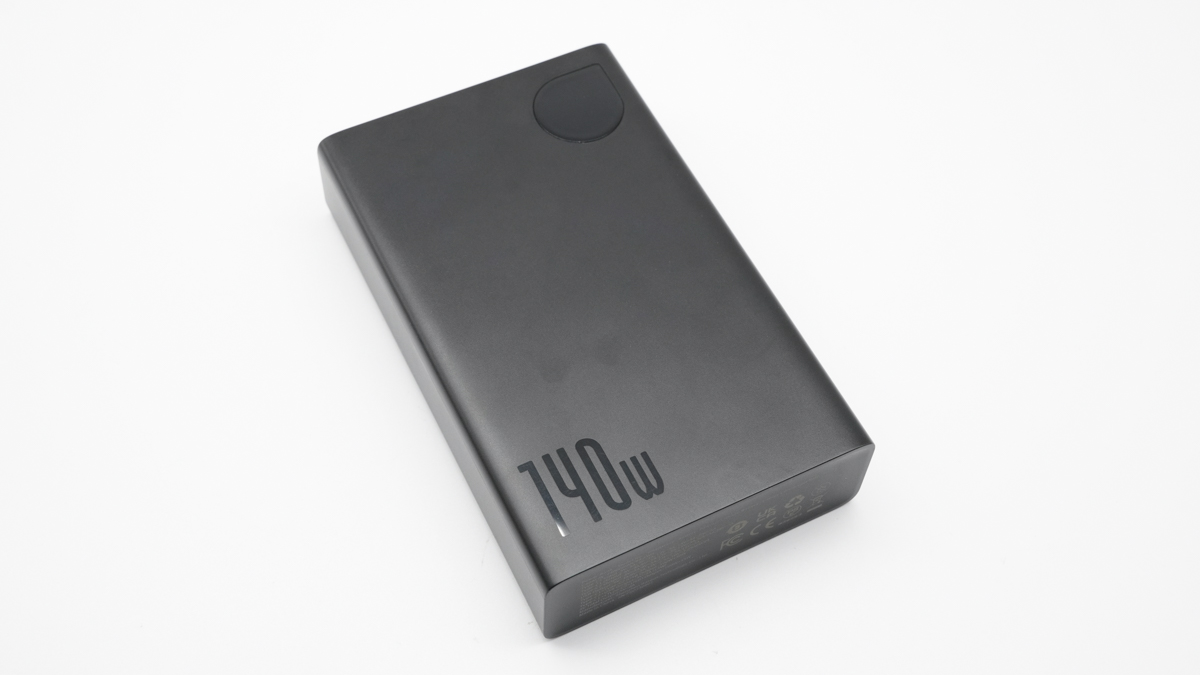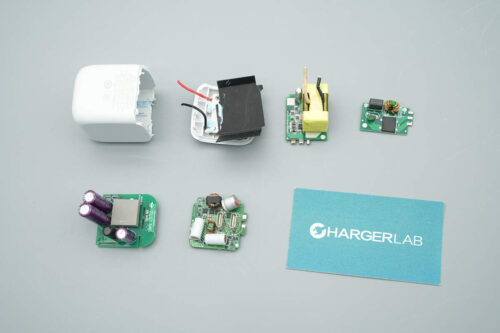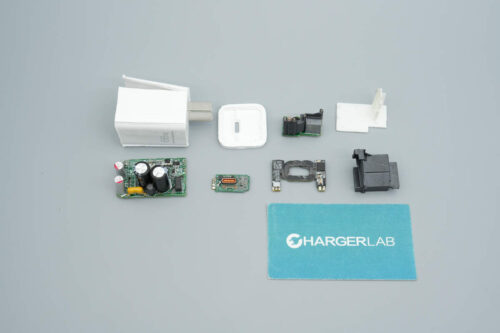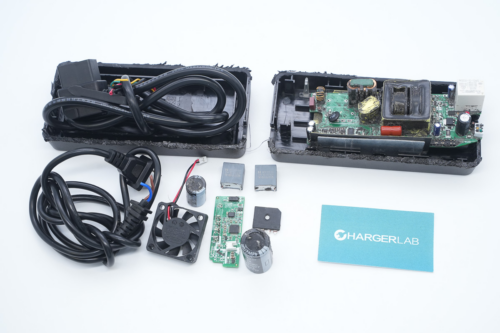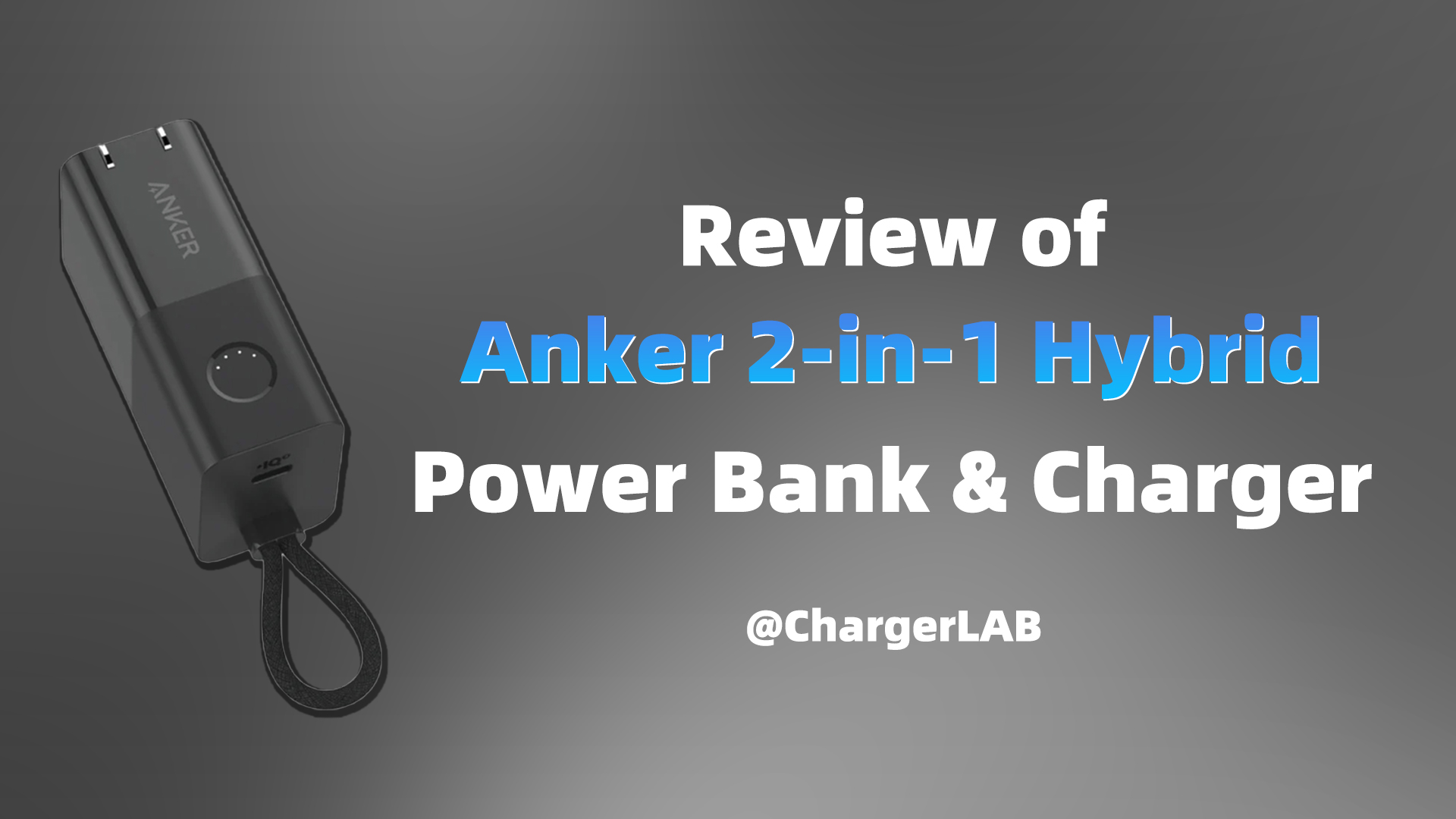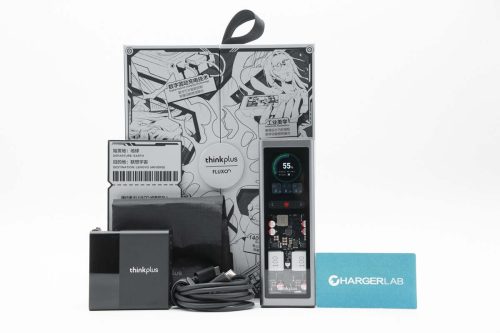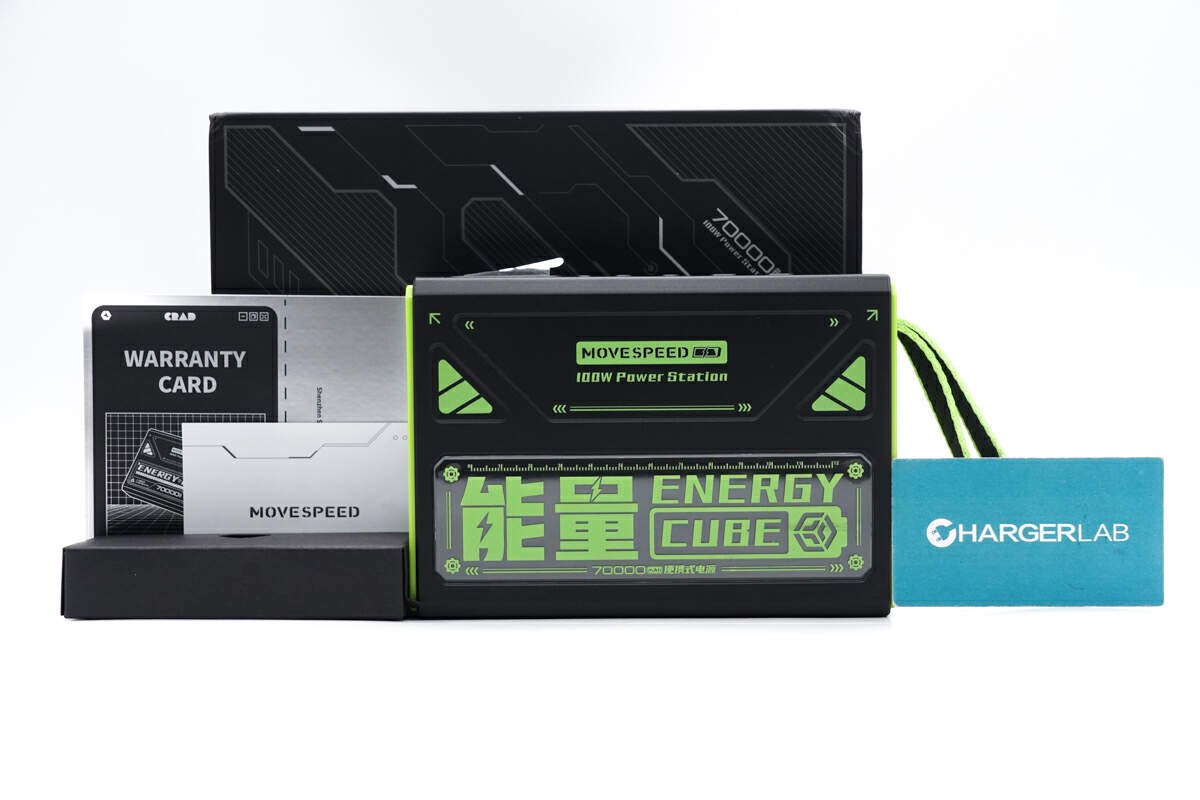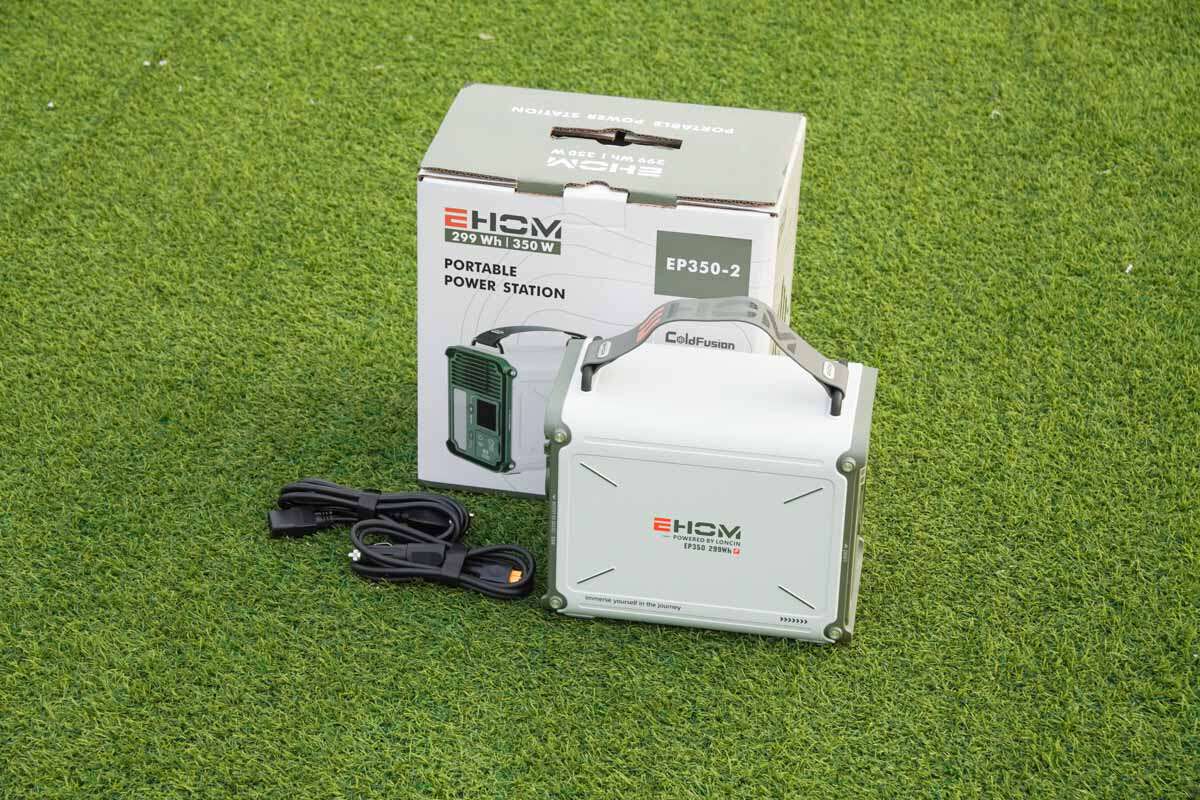Introduction
Nowadays, there is an increasing demand from users for high-power smart device charging, leading to a growing market for dual-direction fast-charging power banks. In this review, ChargerLAB has obtained an unreleased Baseus 140W Power Bank. This power bank features two USB-C ports and one USB-A port, with support for a maximum output of 28V5A 140W. Let's take a closer look at the performance of this power bank.
Product Appearance
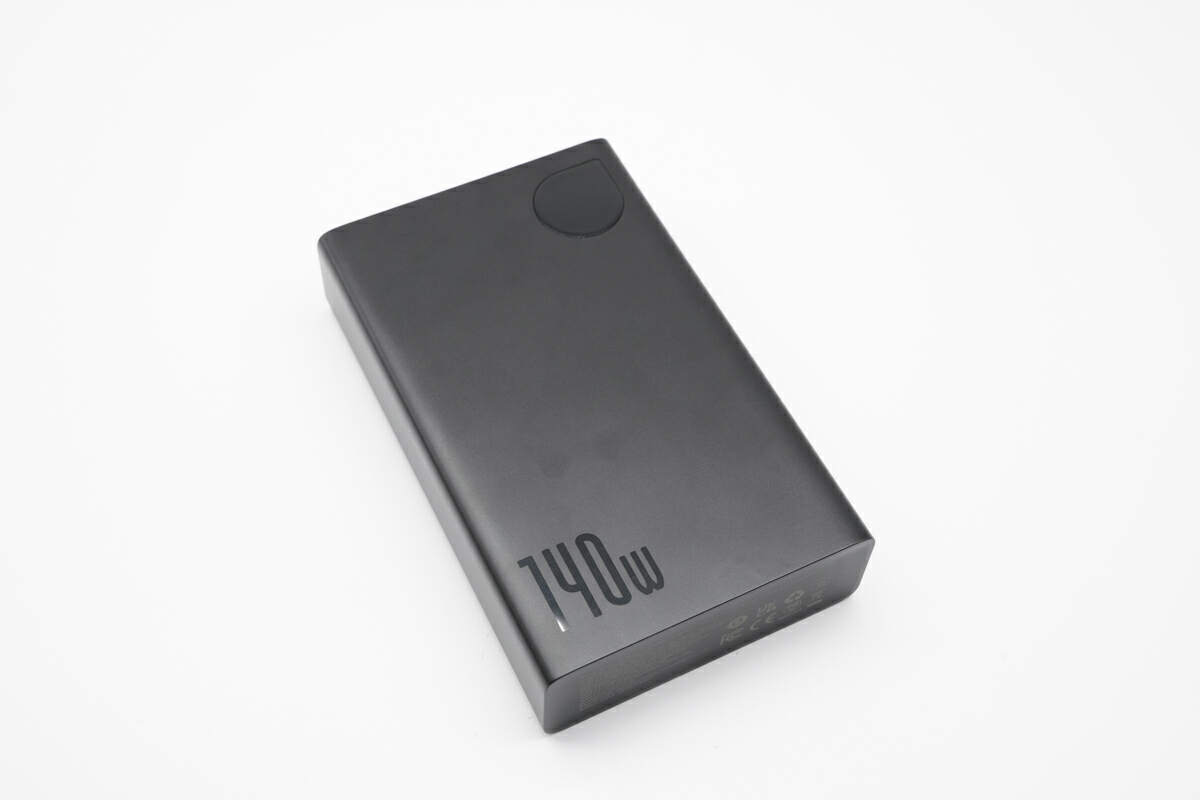
The exterior of the power bank is made of black PC material with a matte finish, making it resistant to fingerprints. The front design closely resembles their Adaman series.
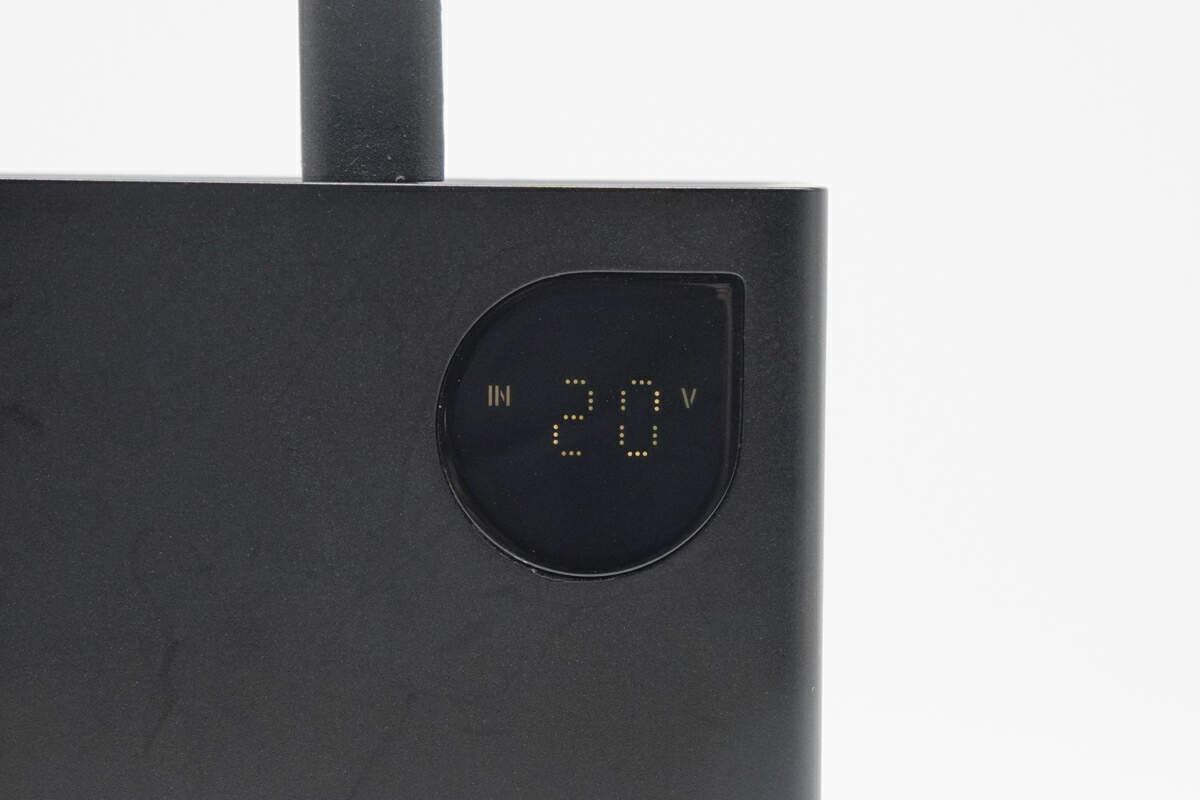
In the upper right corner of the case is a drop-shaped LED display, which can show the remaining battery, voltage, and current, which is very convenient.
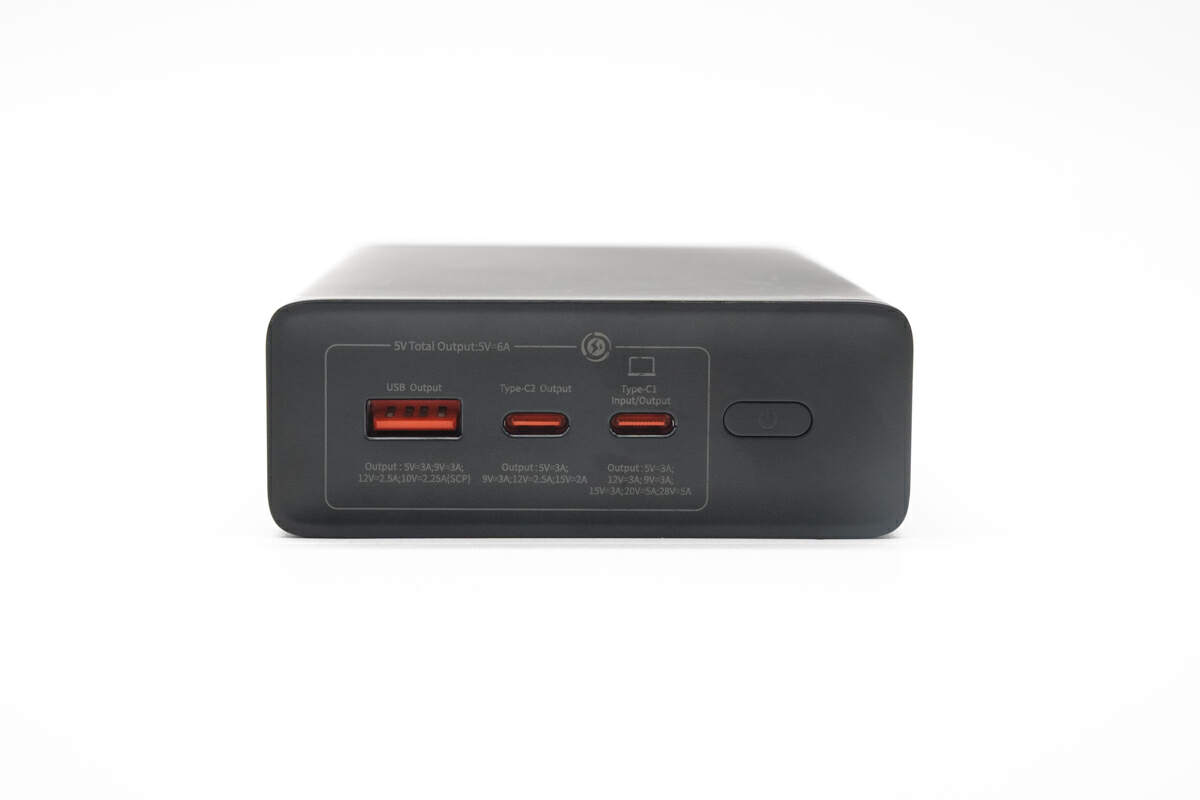
Three USB ports are all designed in red.
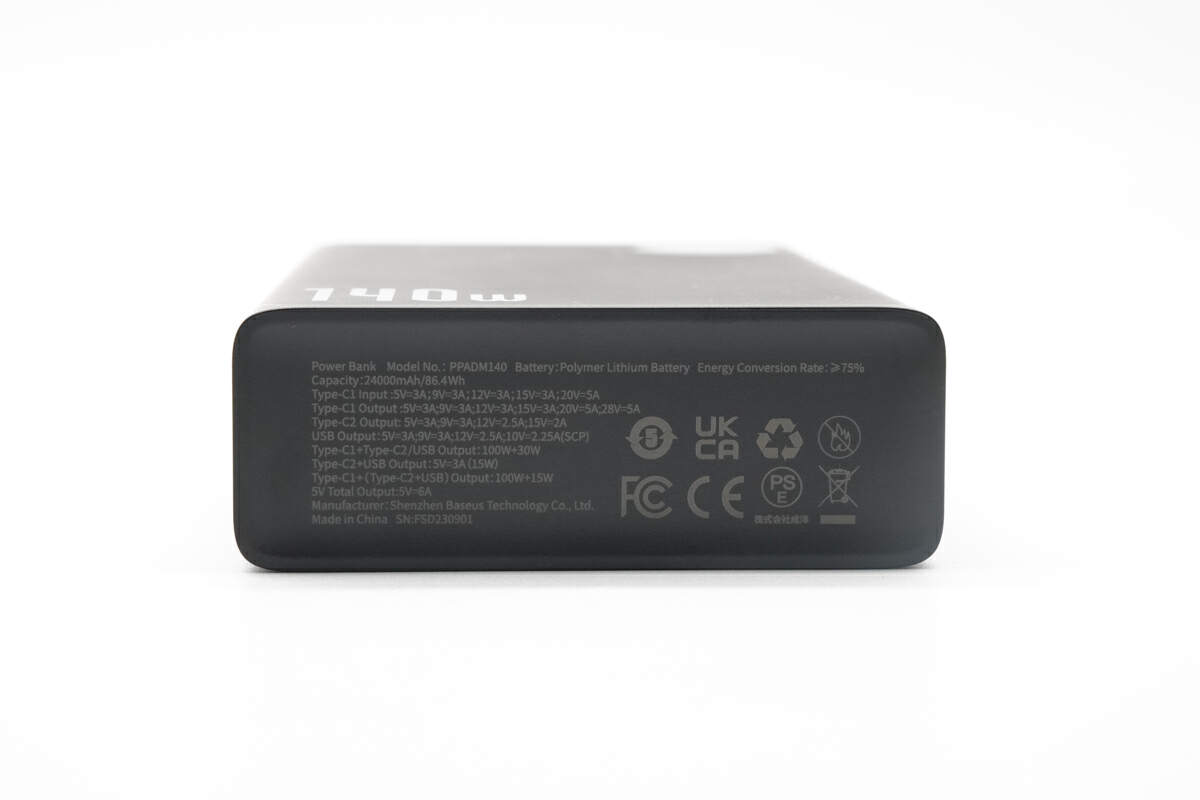
And the specs info are on the other side. Model is PPADM140. The capacity is 24000mAh/86.4Wh. The maximum input power is USB-C1's 100W. Regardless of which port it is used with, the USB-C1 always has a maximum output power of 100W. And it has passed FCC, CE and other certifications.
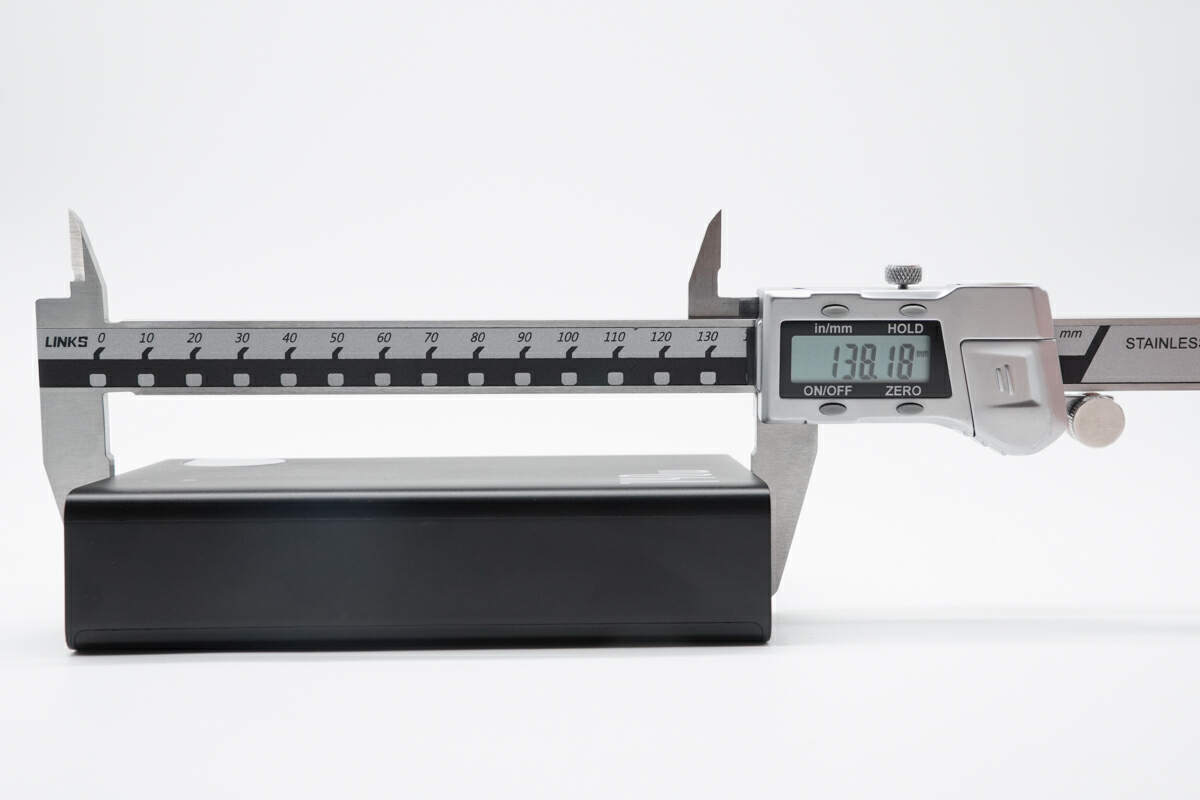
The length of the power bank is about 138mm (5.43 inches).
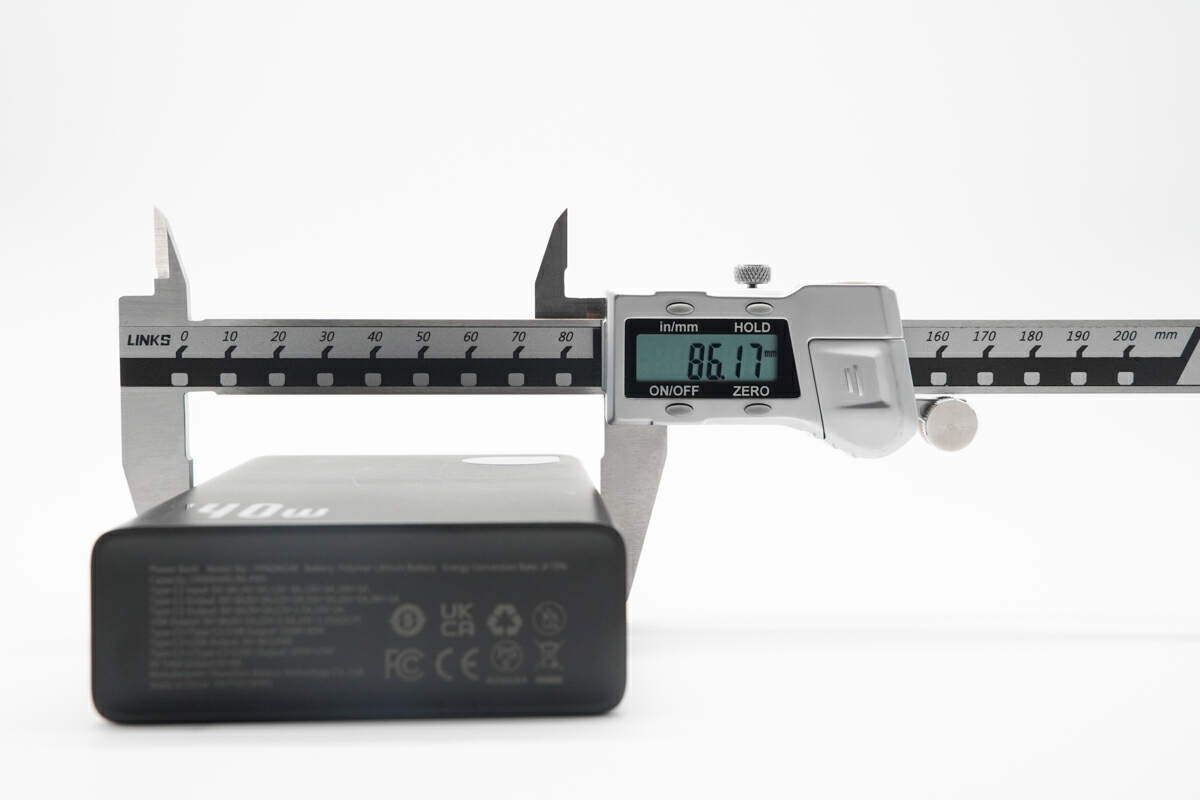
The width is about 86mm (3.39 inches).
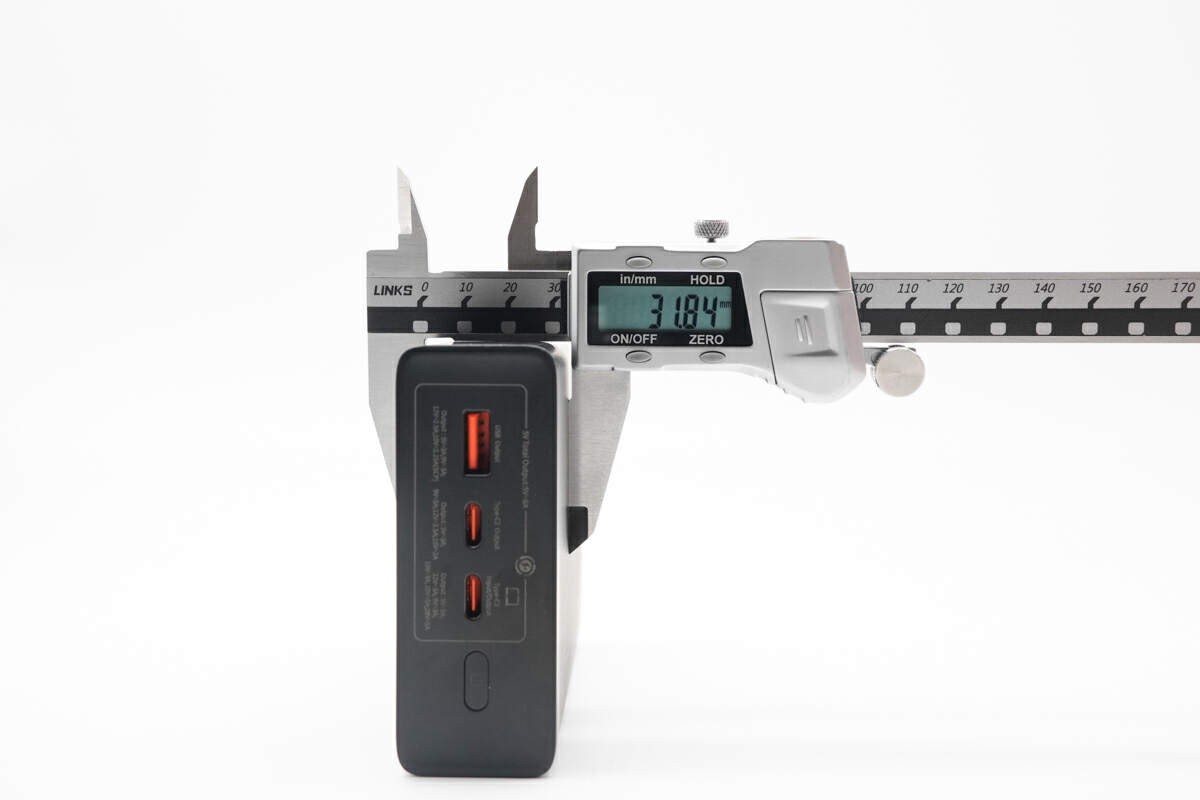
And the height is about 31.8mm (1.25 inches)
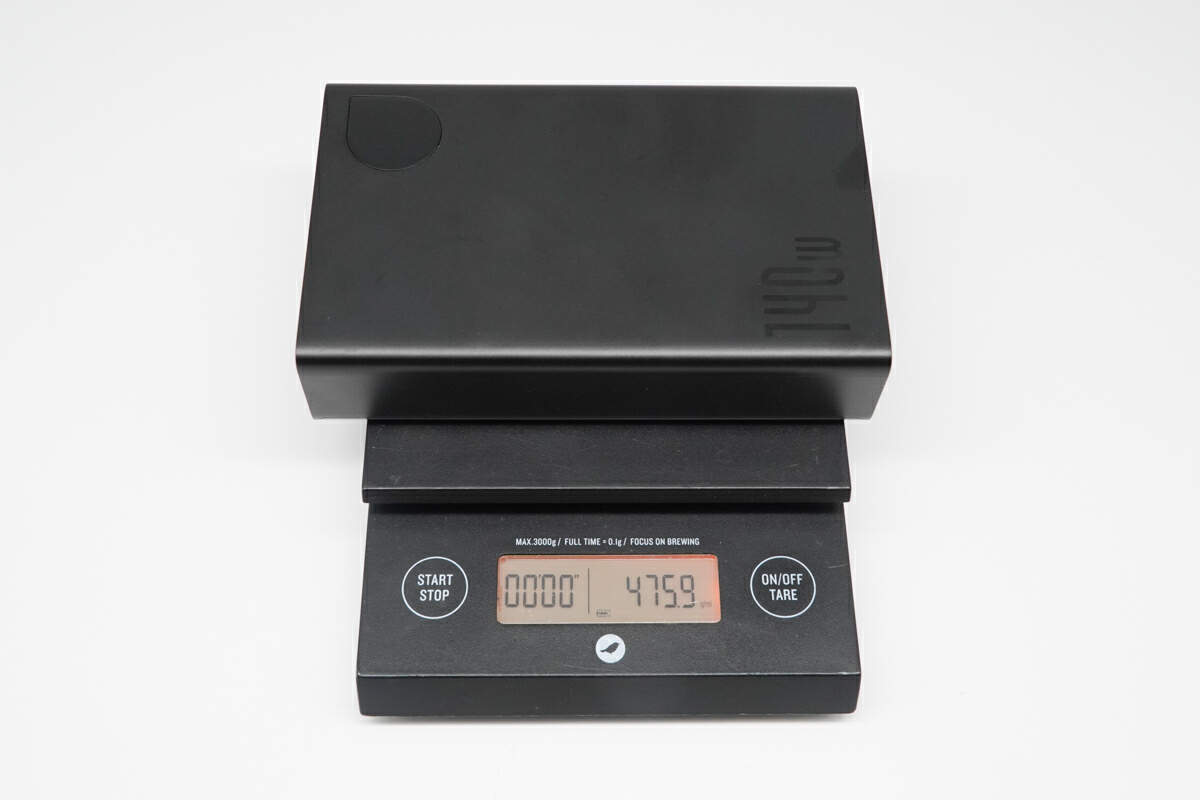
The weight is about 476g (1.05 lb).
Protocol Test
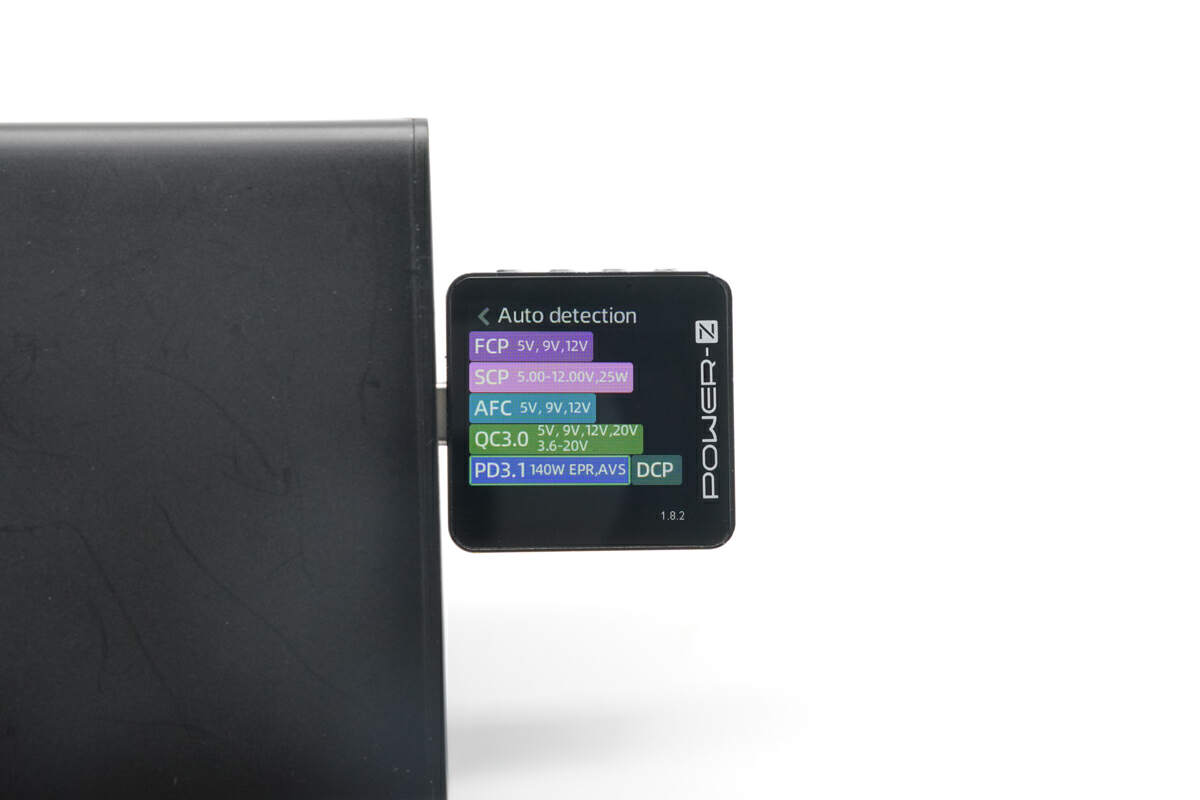
ChargerLAB POWER-Z KM003C shows the USB-C port supports FCP, SCP, AFC, QC3.0, DCP and PD 3.1 protocols.
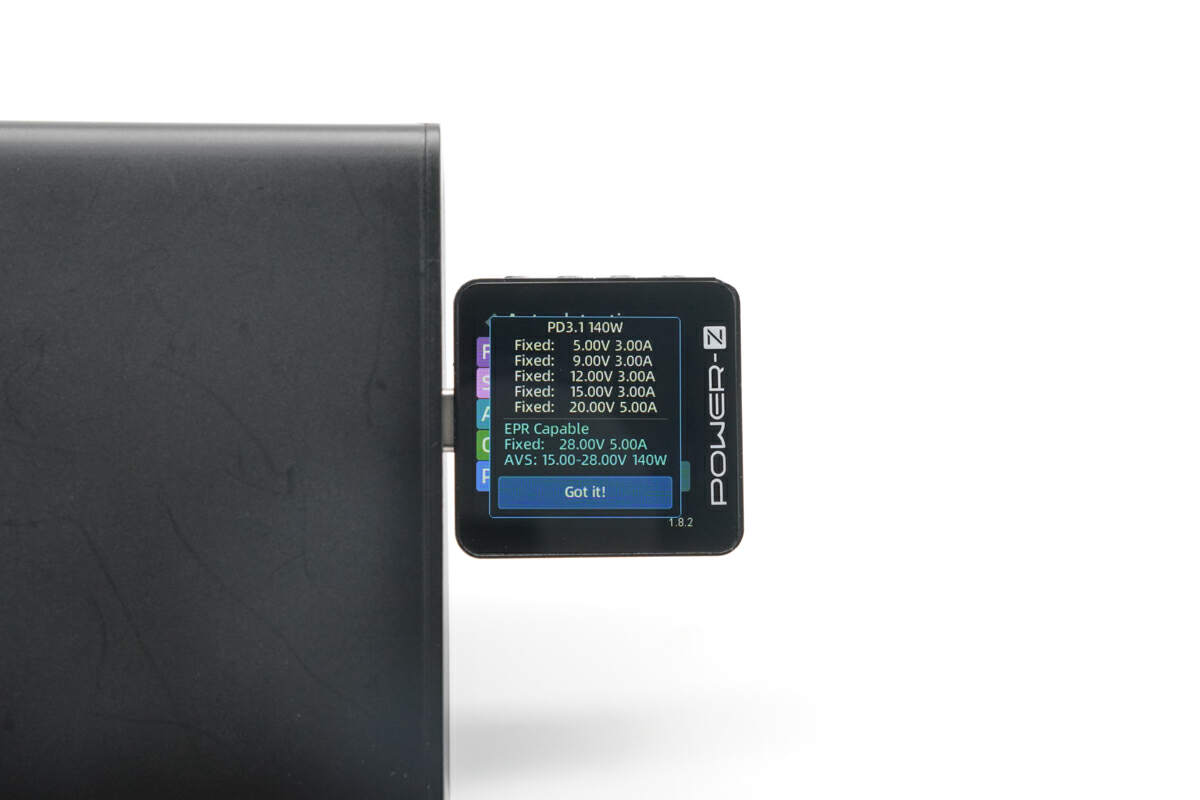
And it has six fixed PDOs of 5V3A, 9V3A, 12V3A, 15V3A, 20V5A, 28V5A, and a set of AVS, which is 15-28V 140W.
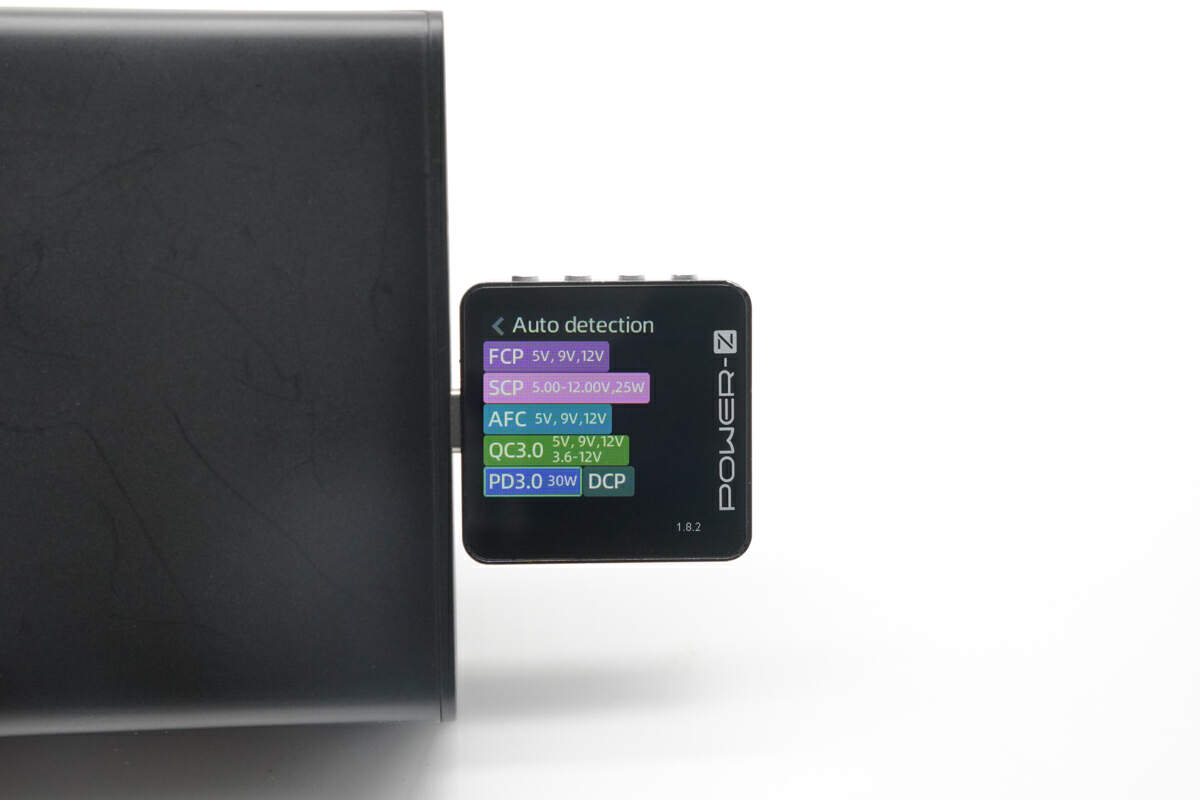
The USB-C2 can only support PD3.0 instead of 3.1; otherwise, it's the same as USB-C1.
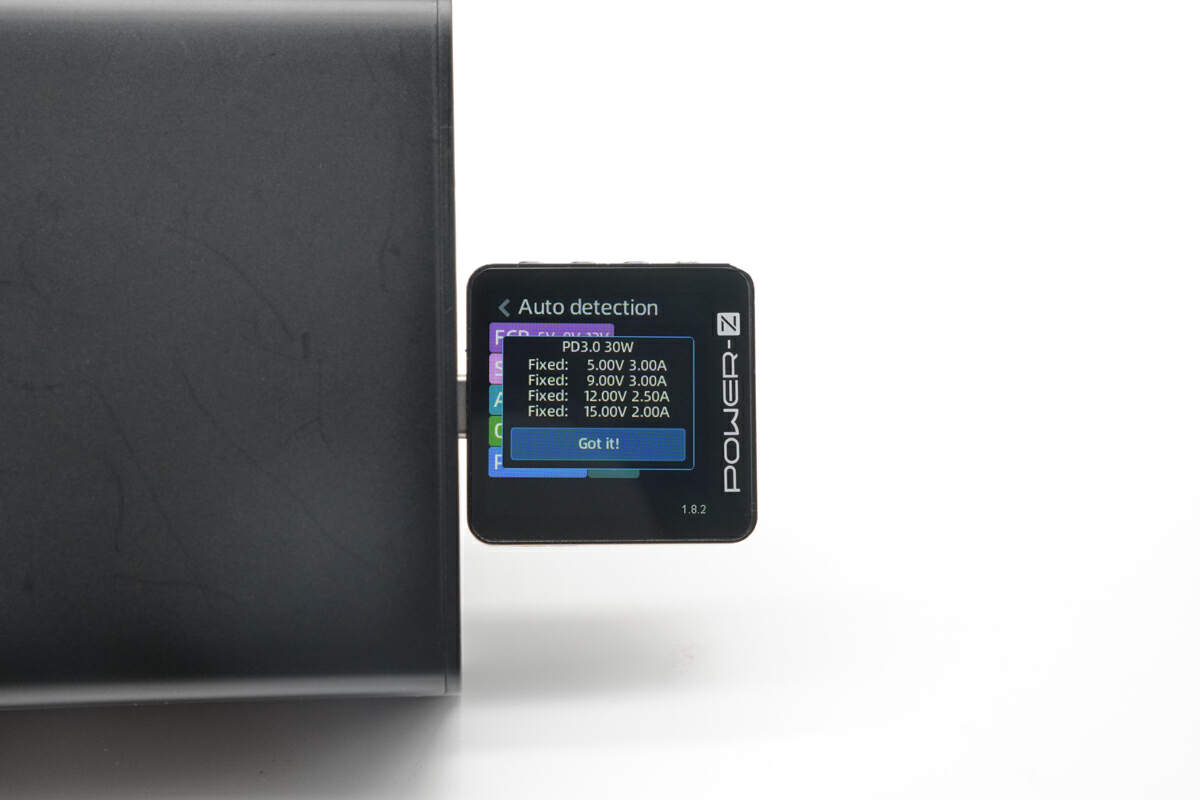
And it only has four fixed PDOs of 5V3A, 9V3A, 12V2.5A and 15V2A.
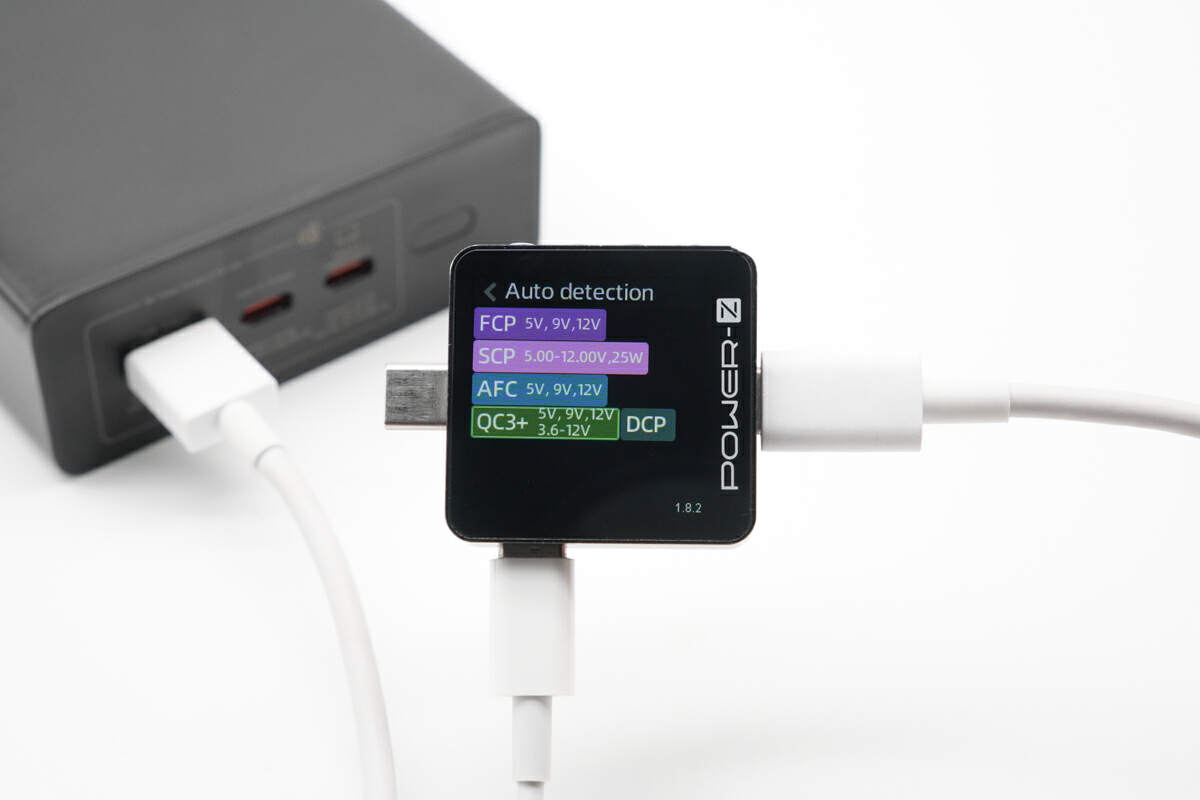
The USB-A port lacks PD protocol, obviously.
Charging Test
Charging Compatibility Test
Next, let's take a look at its charging compatibility with multiple electrical products, starting with USB-C1.
USB-C1
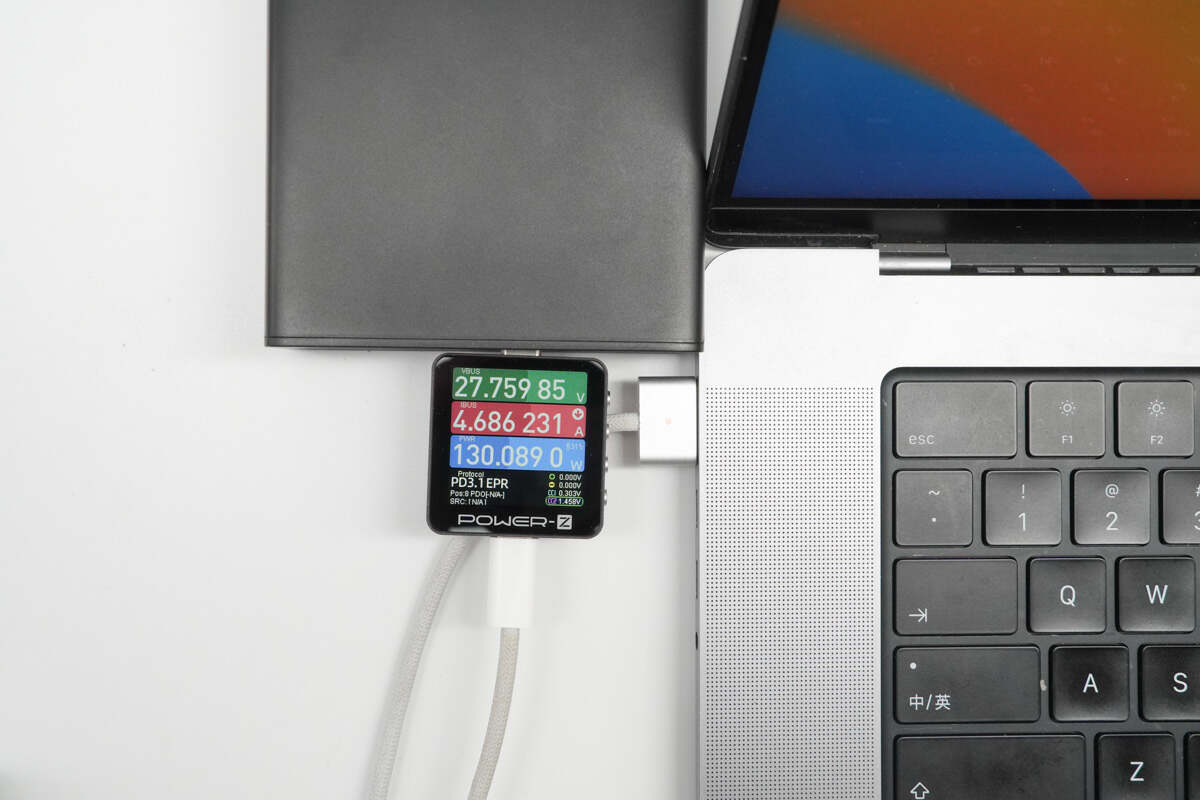
Use it to charge the 16-inch MacBook Pro M1 Max with MagSafe3 cable, the power can be up to 130W, which is impressive.
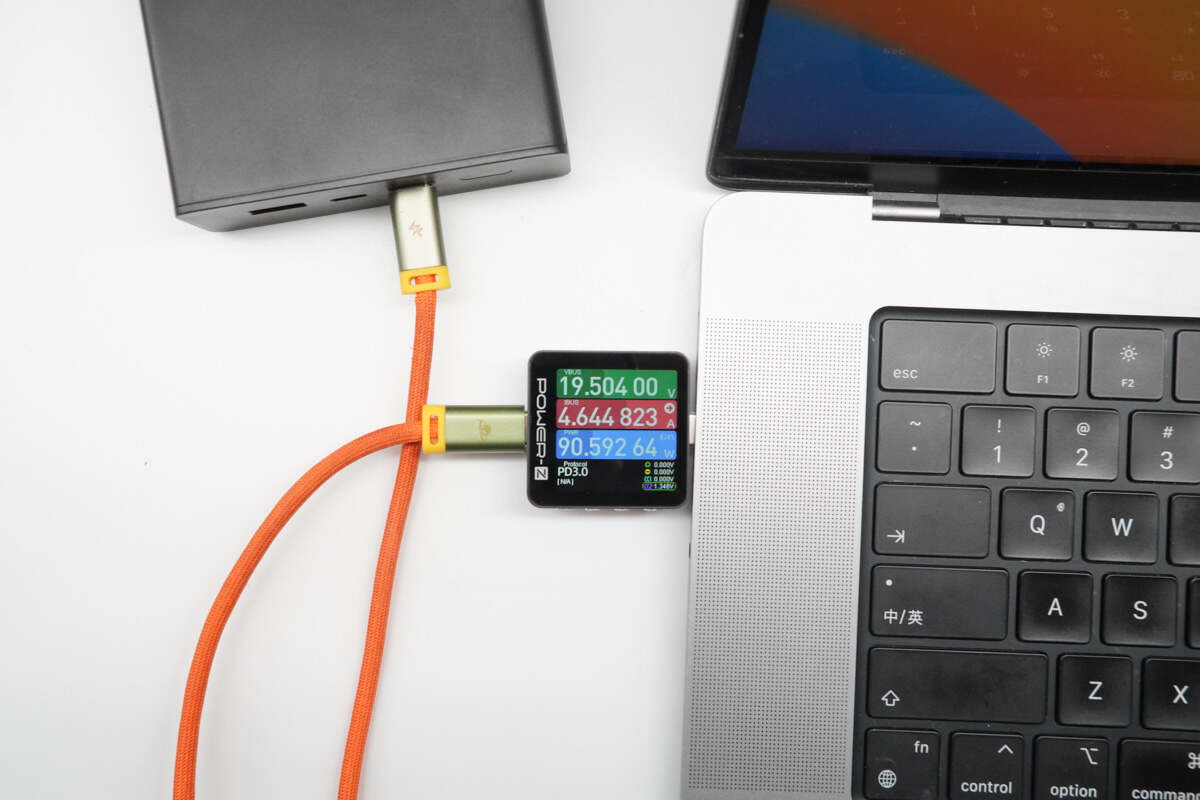
Switching to a USB cable, the power naturally dropped to 90W.
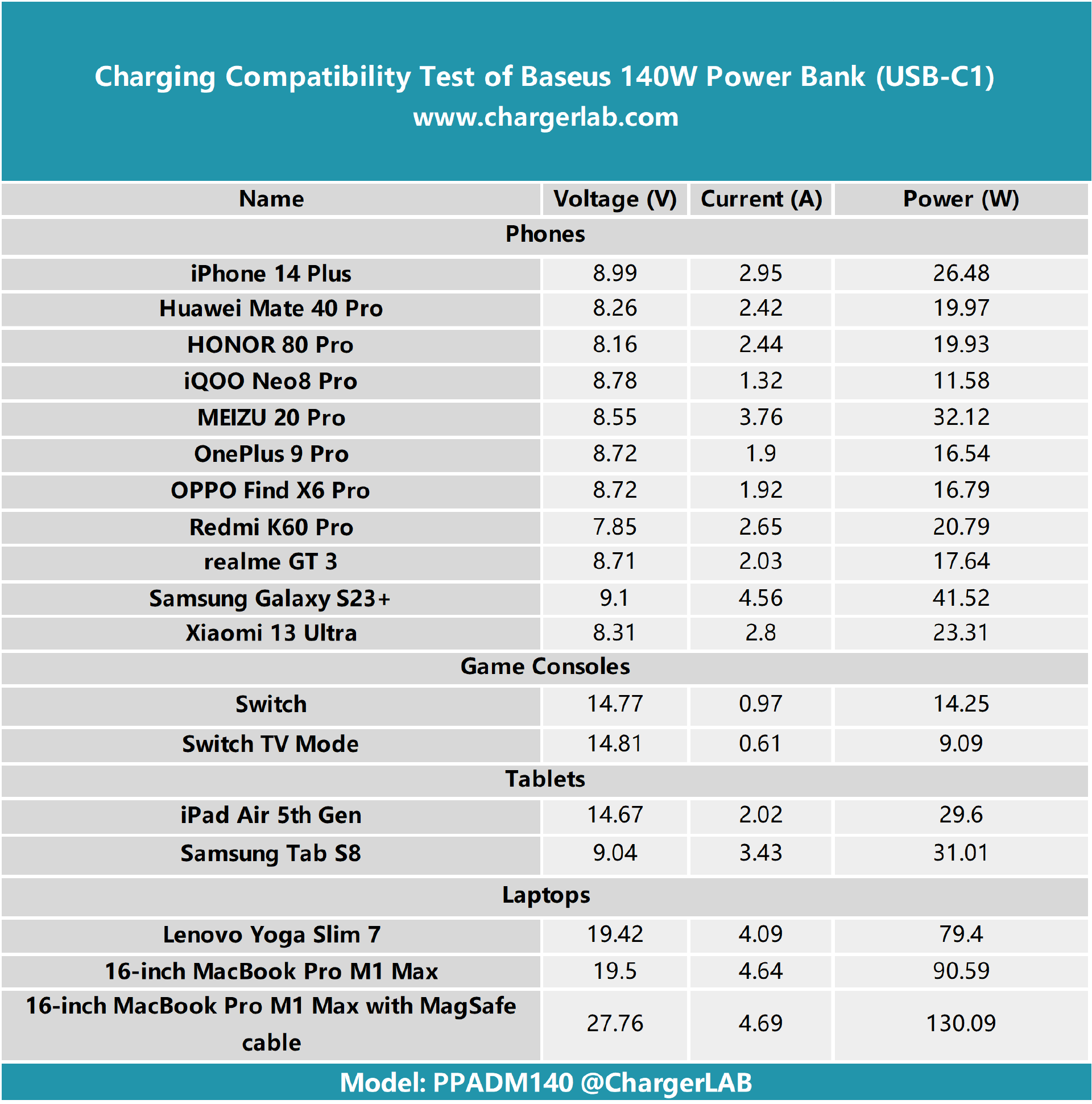
Summarizing the test data in a table, we can see that most smartphones trigger a 9V, while tablets and laptops trigger 15V and 20V voltage modes, with the 16-inch MacBook Pro M1 Max paired with a MagSafe cable triggering a 27V voltage mode.
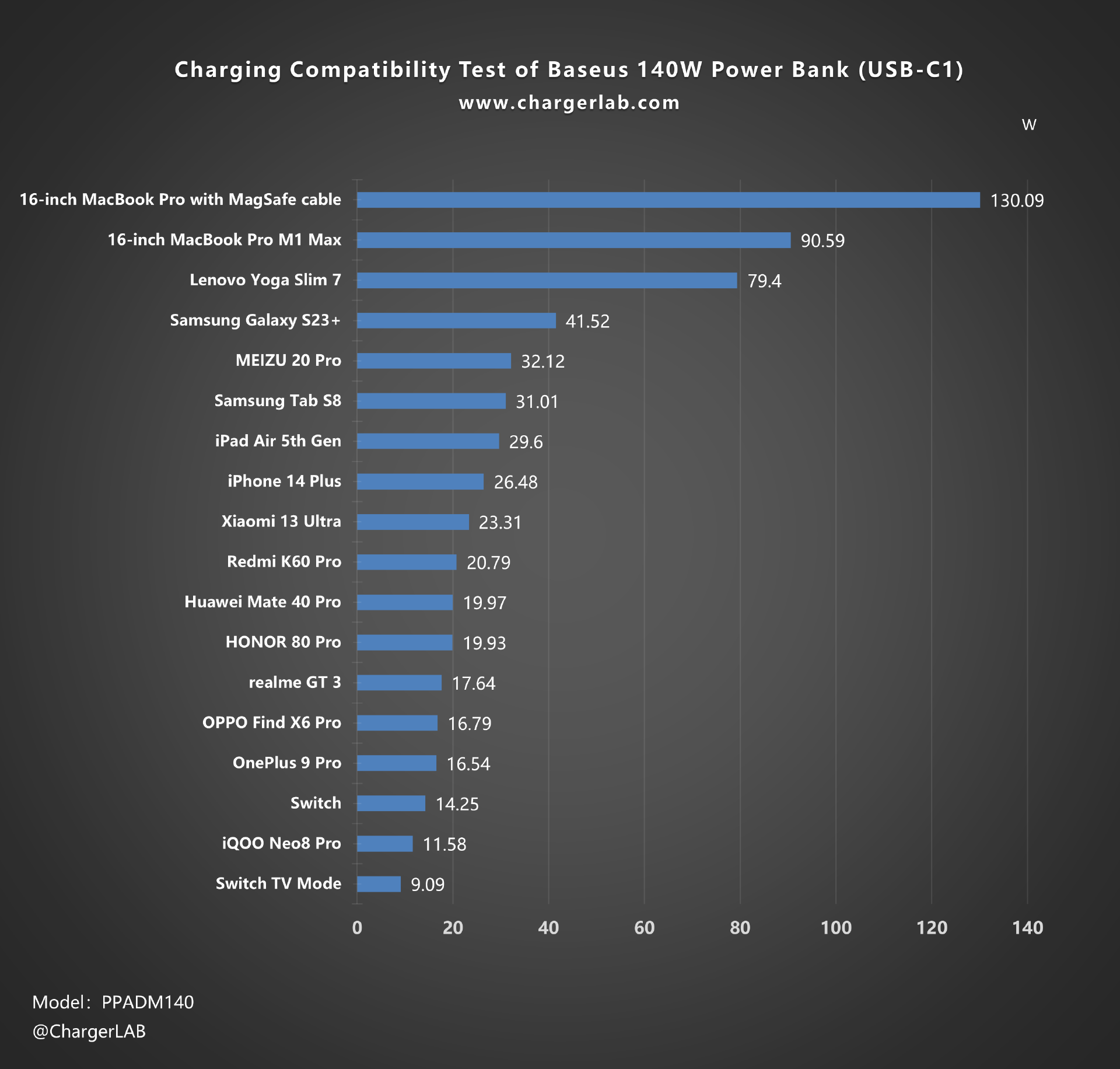
Creating a bar graph, the highest charging power is achieved with the 16-inch MacBook Pro M1 Max paired with a MagSafe cable, reaching around 130W. The lowest charging power is with the iQOO Neo8 Pro at around 12W, with other models falling in the 17-23W range.
USB-C2
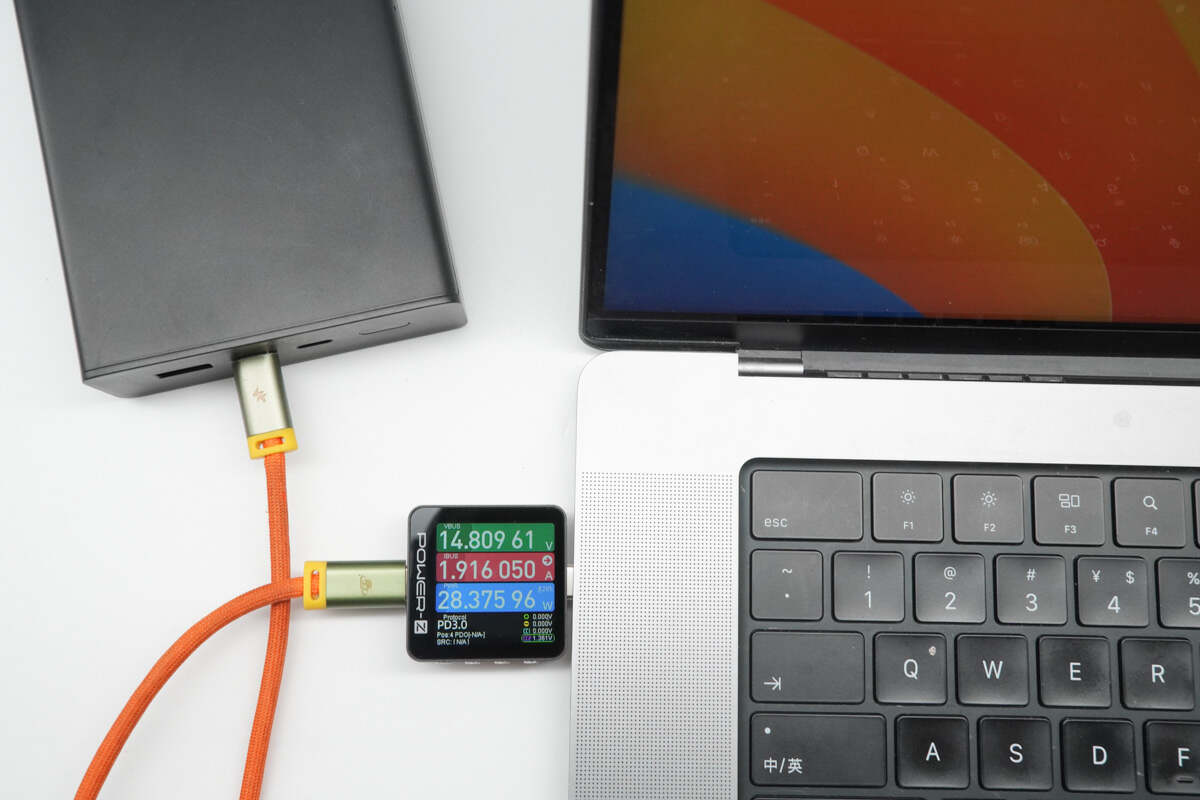
When paired with USB-C cable, it can only provide 28W to the 16-inch MacBook Pro M1 Max, so you may want to use it just for charging your smartphones.
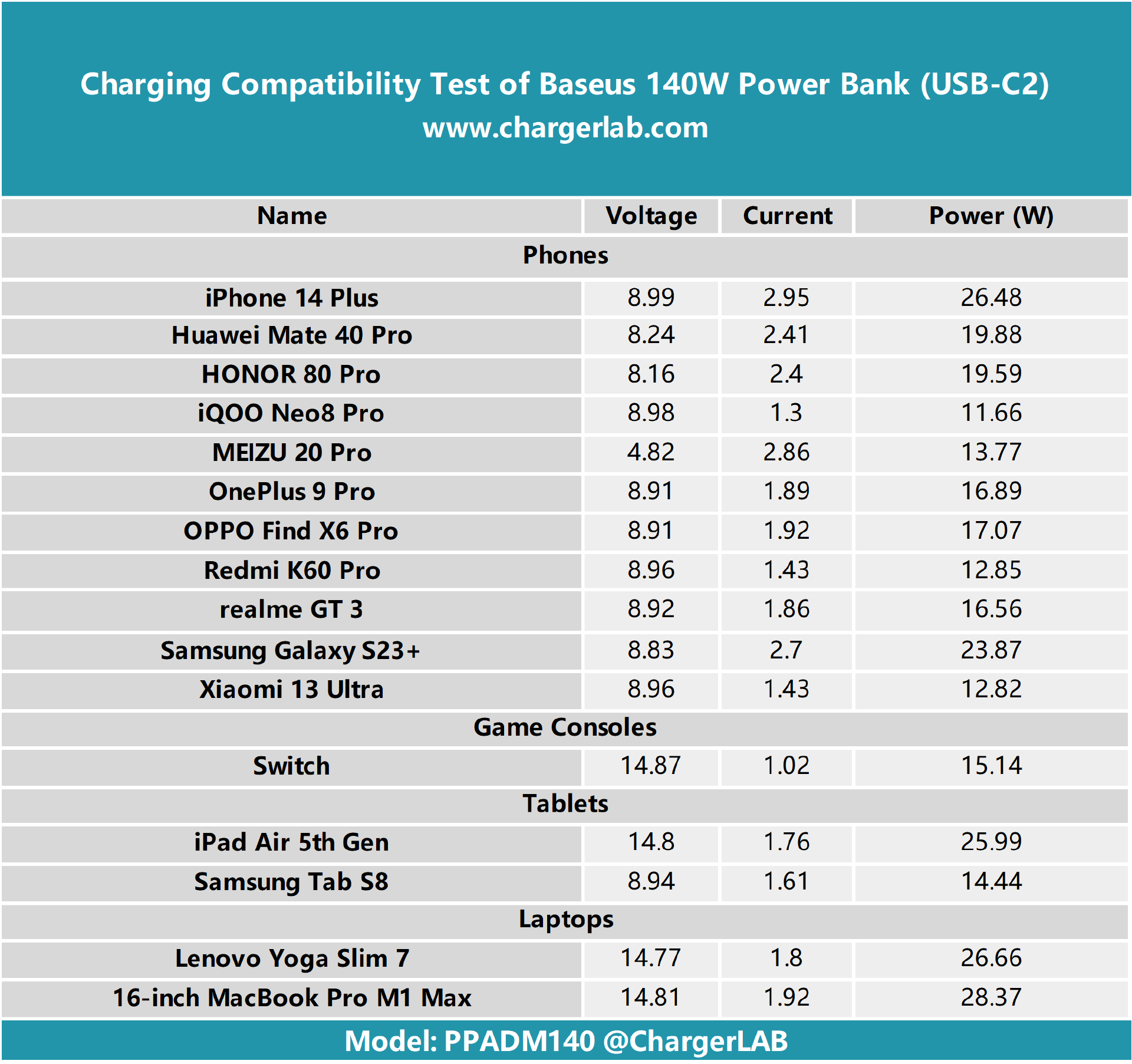
Now, looking at its compatibility, for smartphones, it triggers a 9V voltage mode, while for tablets and laptops, it can trigger a 15V voltage mode.
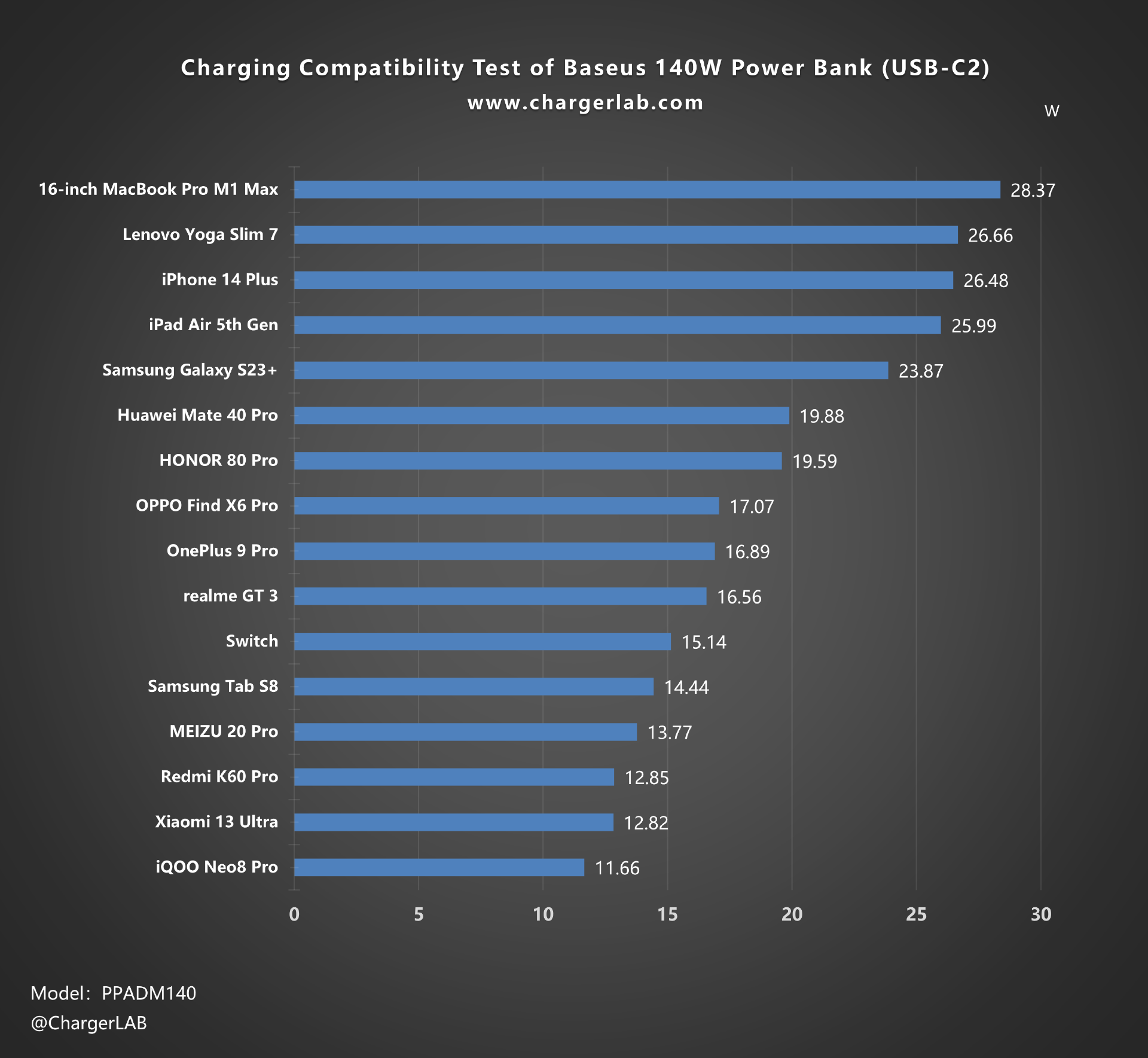
Creating a bar graph, we can see that the highest charging power is still achieved with laptops, reaching 28.37W, while smartphones mostly maintain power in the 11-27W range.
USB-A
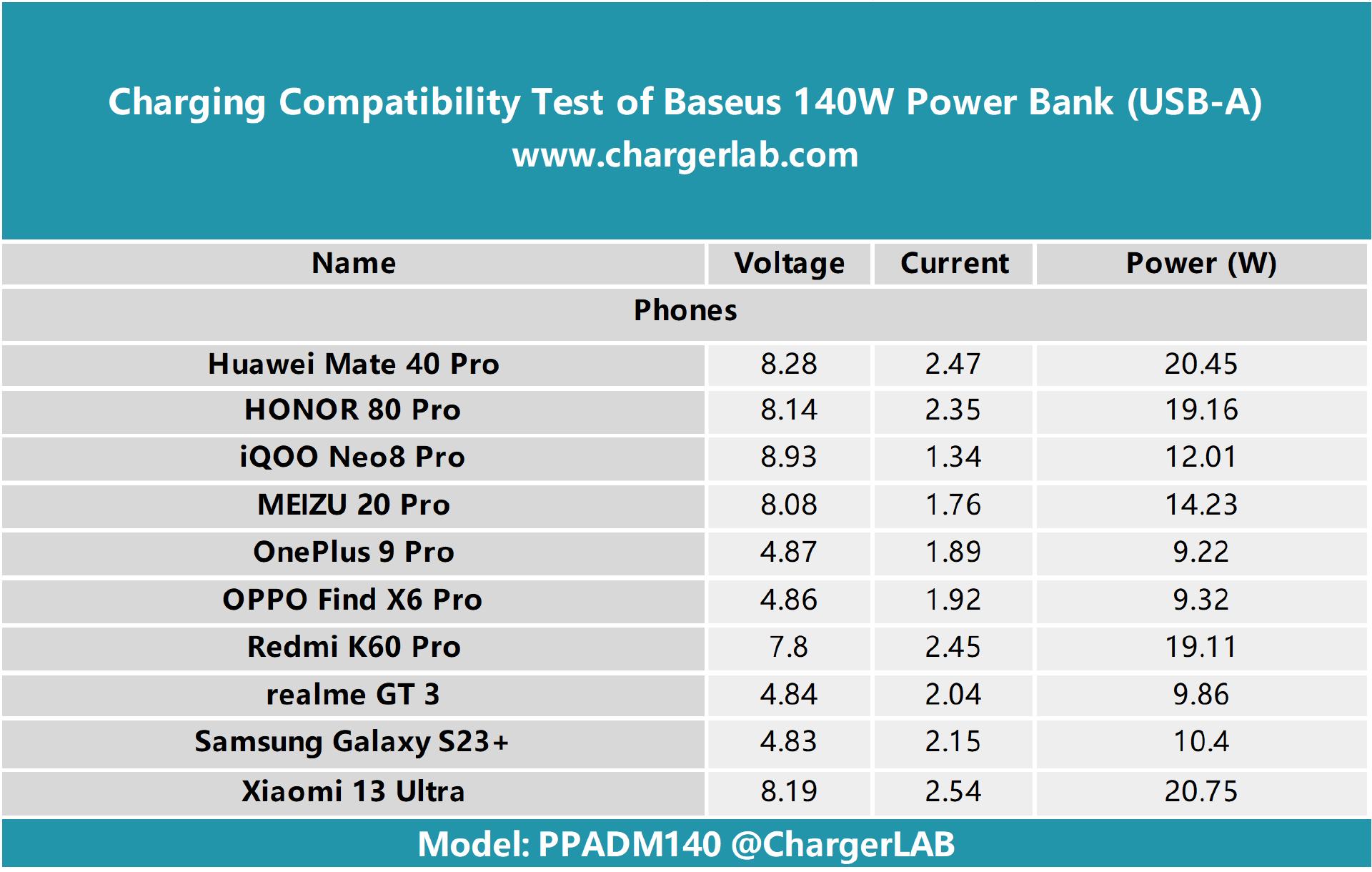
Lastly, let's examine the charging compatibility of the USB-A port. Summarizing the test data in a table, when supporting the SCP fast charging protocol, it can provide around 20W of power for Huawei smartphones.
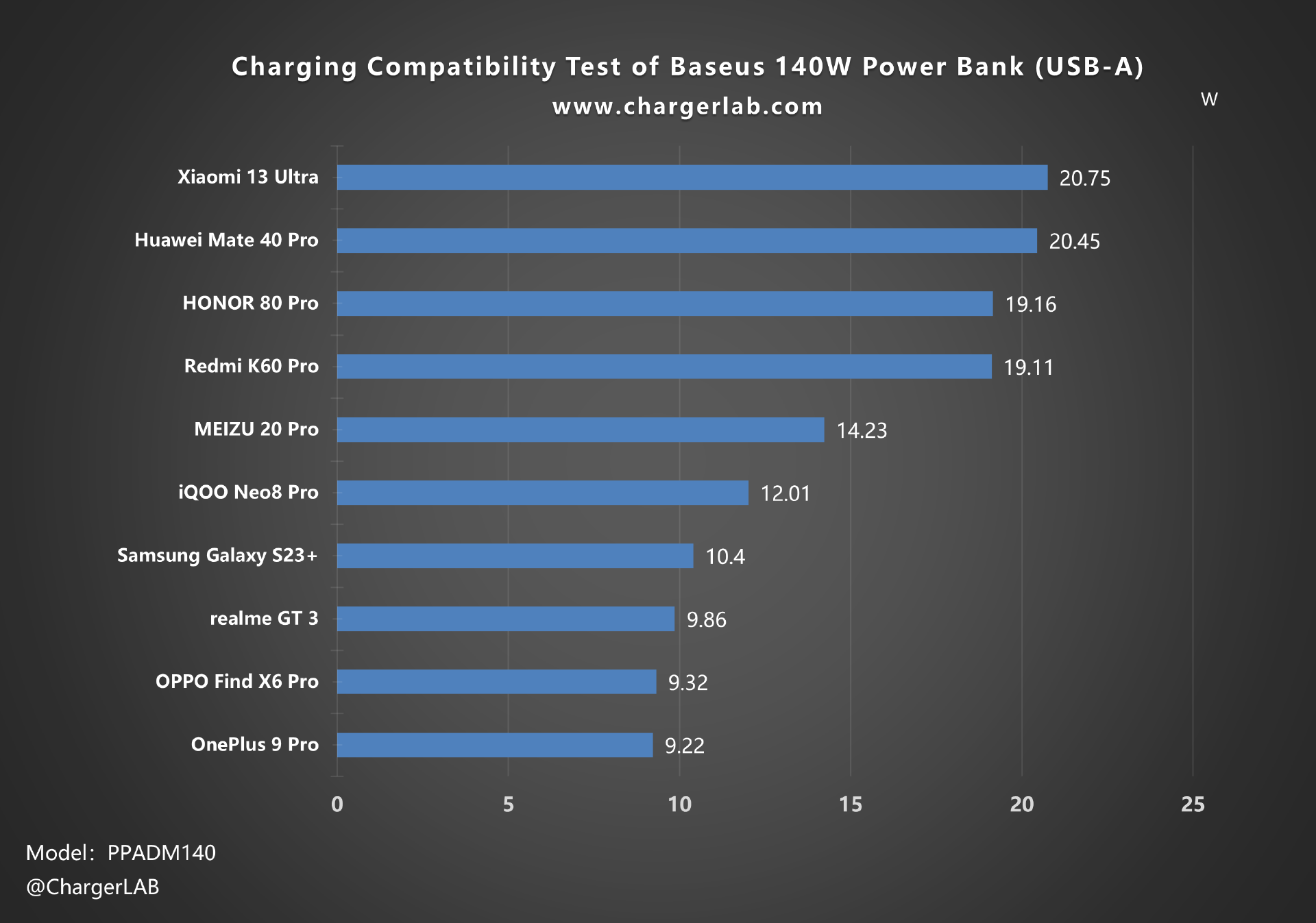
Creating a bar graph, the highest charging power is achieved with the Xiaomi 13 Ultra at 20.75W, followed by the Huawei Mate 40 Pro at 20.45W. Xiaomi, Huawei, and Honor series models have relatively ideal charging power, while other models are around 10W.
Multiple Ports
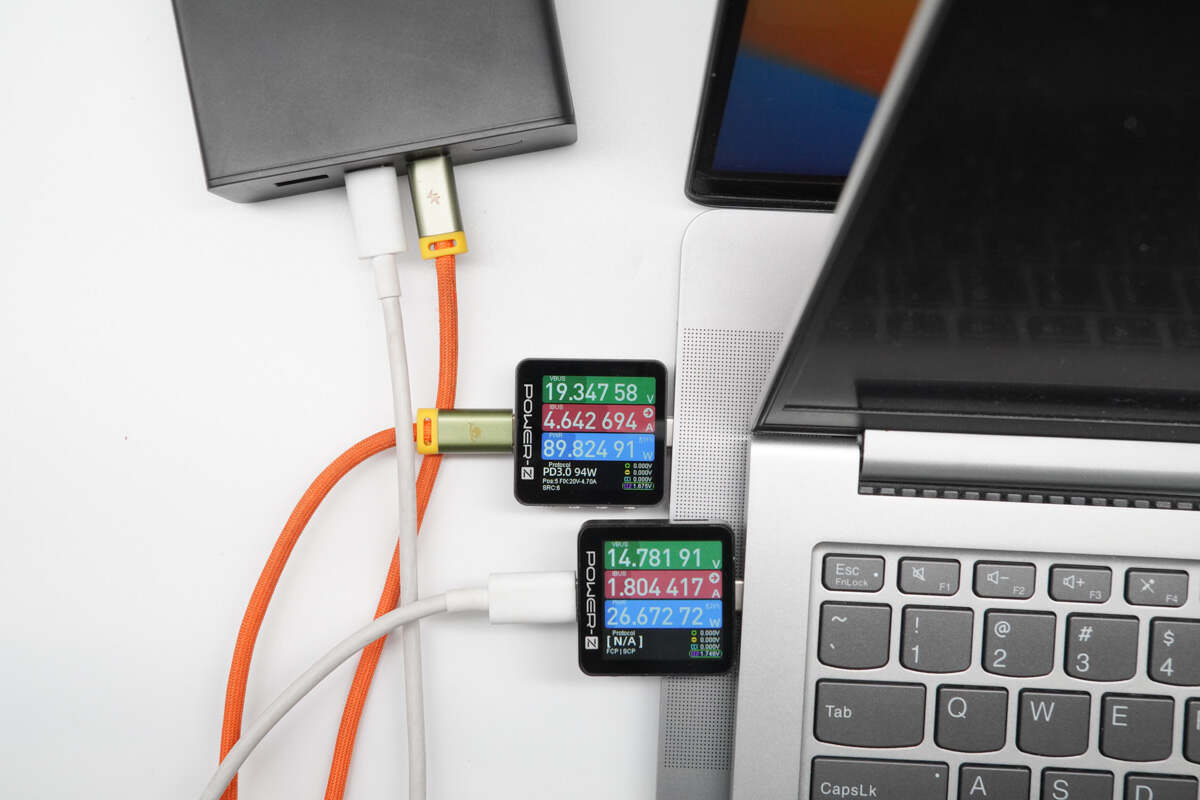
When both USB-C1 and USB-C2 ports are used simultaneously, the C1 delivers 90W of power, while the C2 port provides 27W.
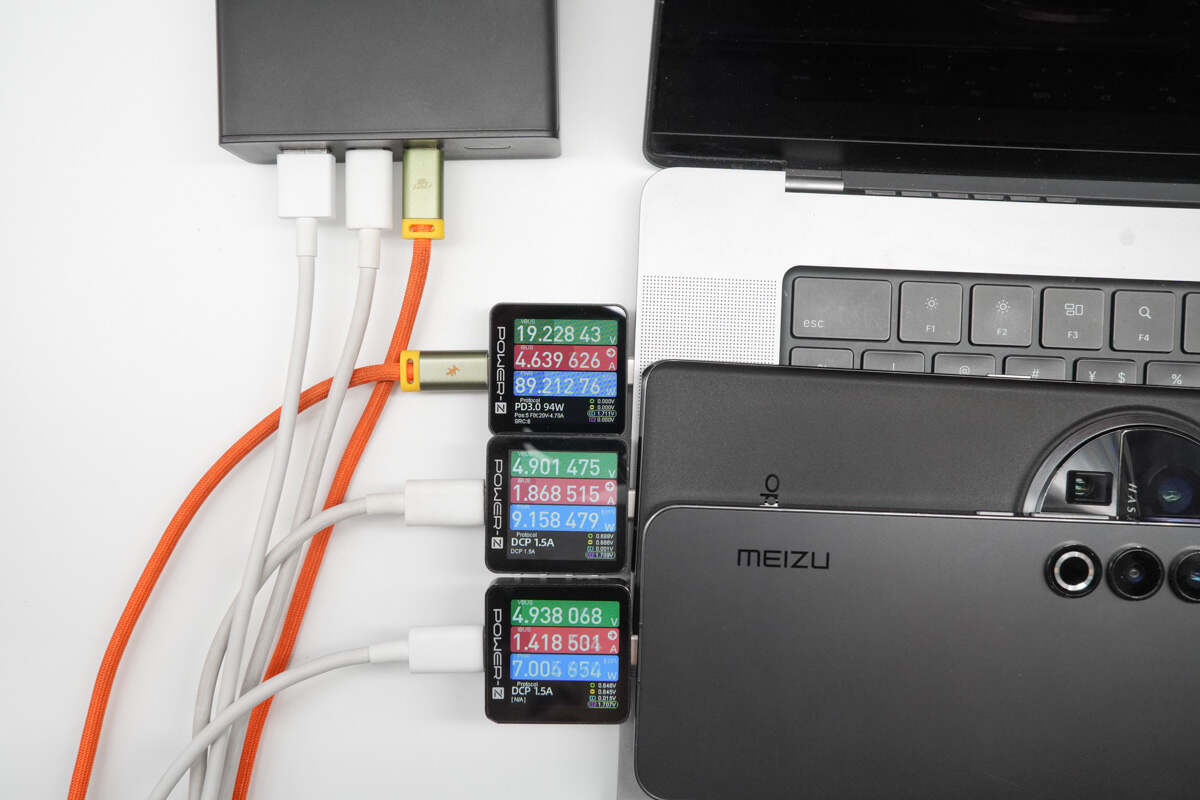
Simultaneously using all three USB ports, from top to bottom, the power levels are: 90W, 9W, 7W.
Full Charging Test
Next, we'll use the Apple 140W charger to fully charge this power bank.
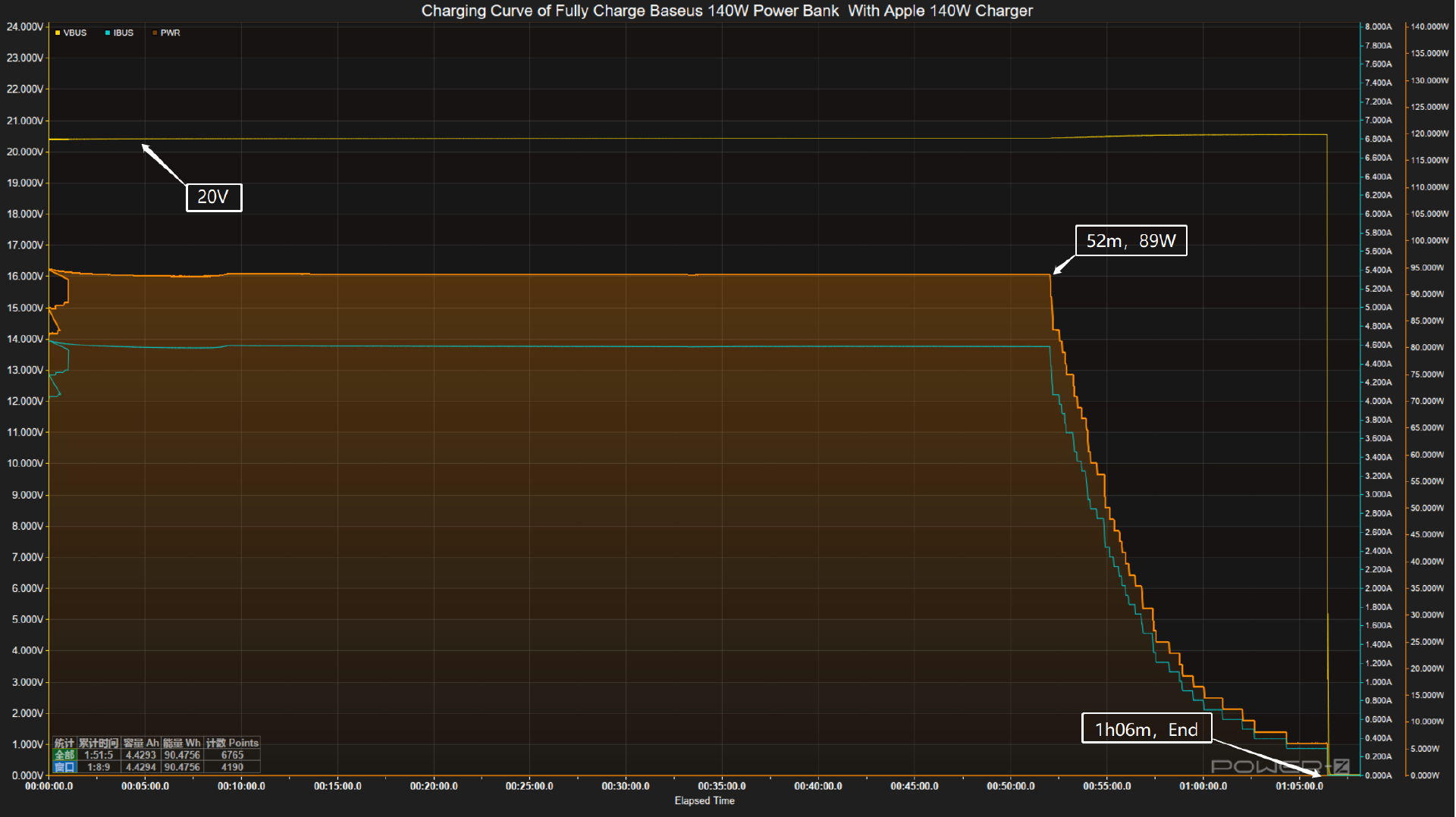
The voltage is always around 20V. The charging "curve" is basically a polyline. Charging power stabilizes at 89W until around the 52nd minute, then rapidly drops in a stepwise manner until it's fully charged, taking approximately 1 hour and 6 minutes.
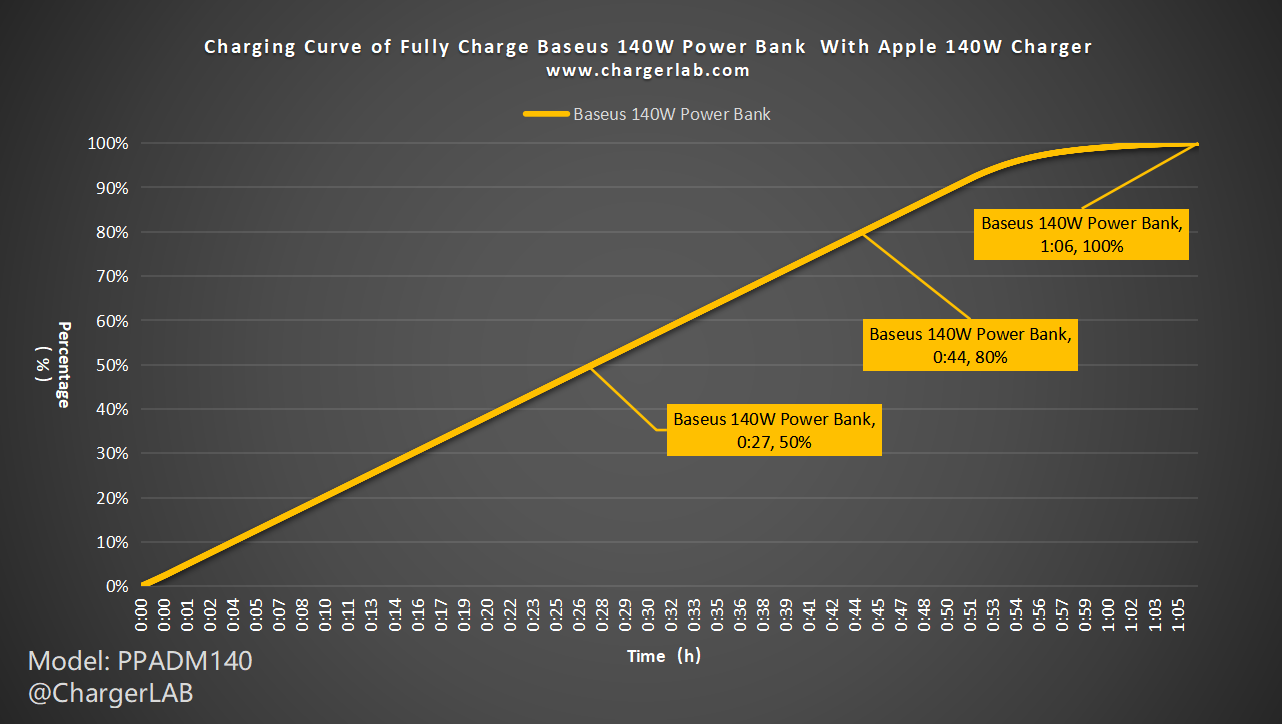
We also turn it into another curve. The Apple 140W charger can charge this 140W power bank to 50% in 27 mins. And it can reach 80% in 44 mins, 100% in one hour and 6 mins. The last 20% is much faster than that of smartphones.
Output Efficiency
Output efficiency is an important factor in assessing the quality of a power bank. Higher output efficiency indicates a higher conversion rate and less heat generation. We tested this power bank's output efficiency at different power levels because efficiency varies at different output levels. Keep in mind that this power has a capacity of 86.4Wh.
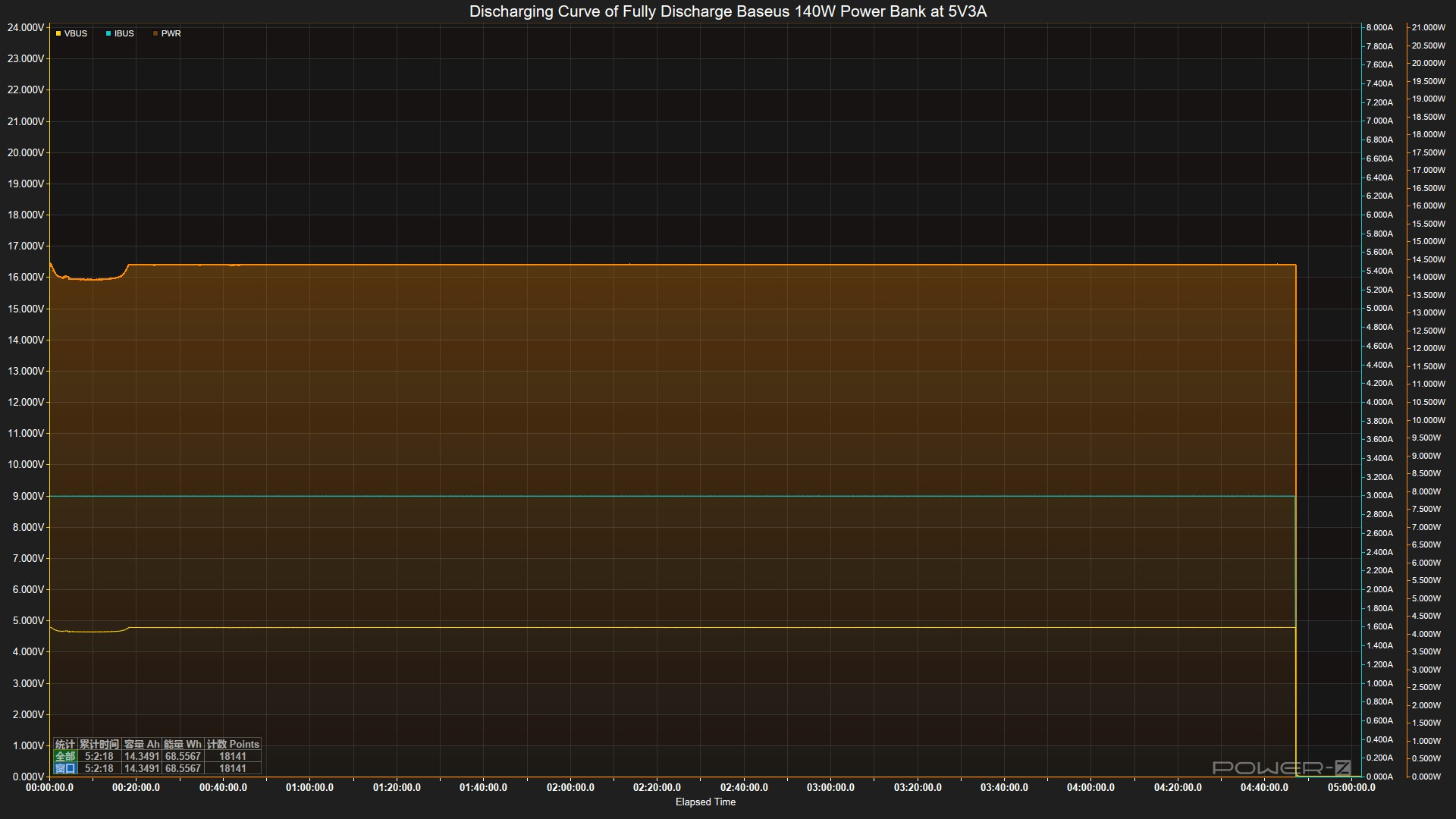
First, we had the power bank continuously output at a rate of 5V3A (15W), which lasted for 4 hours and 47 minutes. The actual discharged battery energy was approximately 58.71Wh, resulting in an efficiency of about 79.35% at this output level.
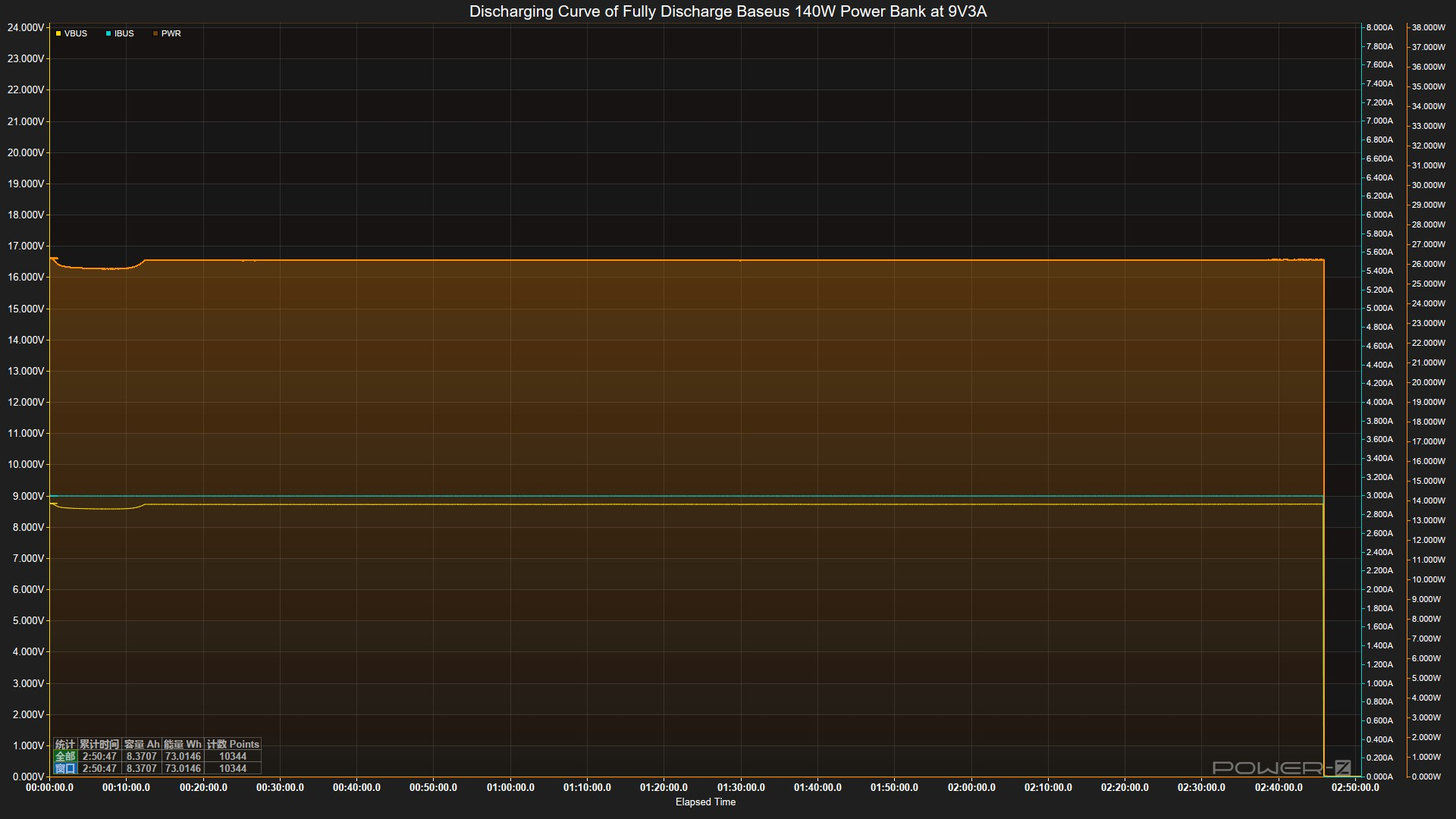
Next, we tested it at 9V3A (27W) output, which ended after 2 hours and 46 minutes. The actual discharged battery energy was approximately 73Wh, resulting in an efficiency of about 84.49%.
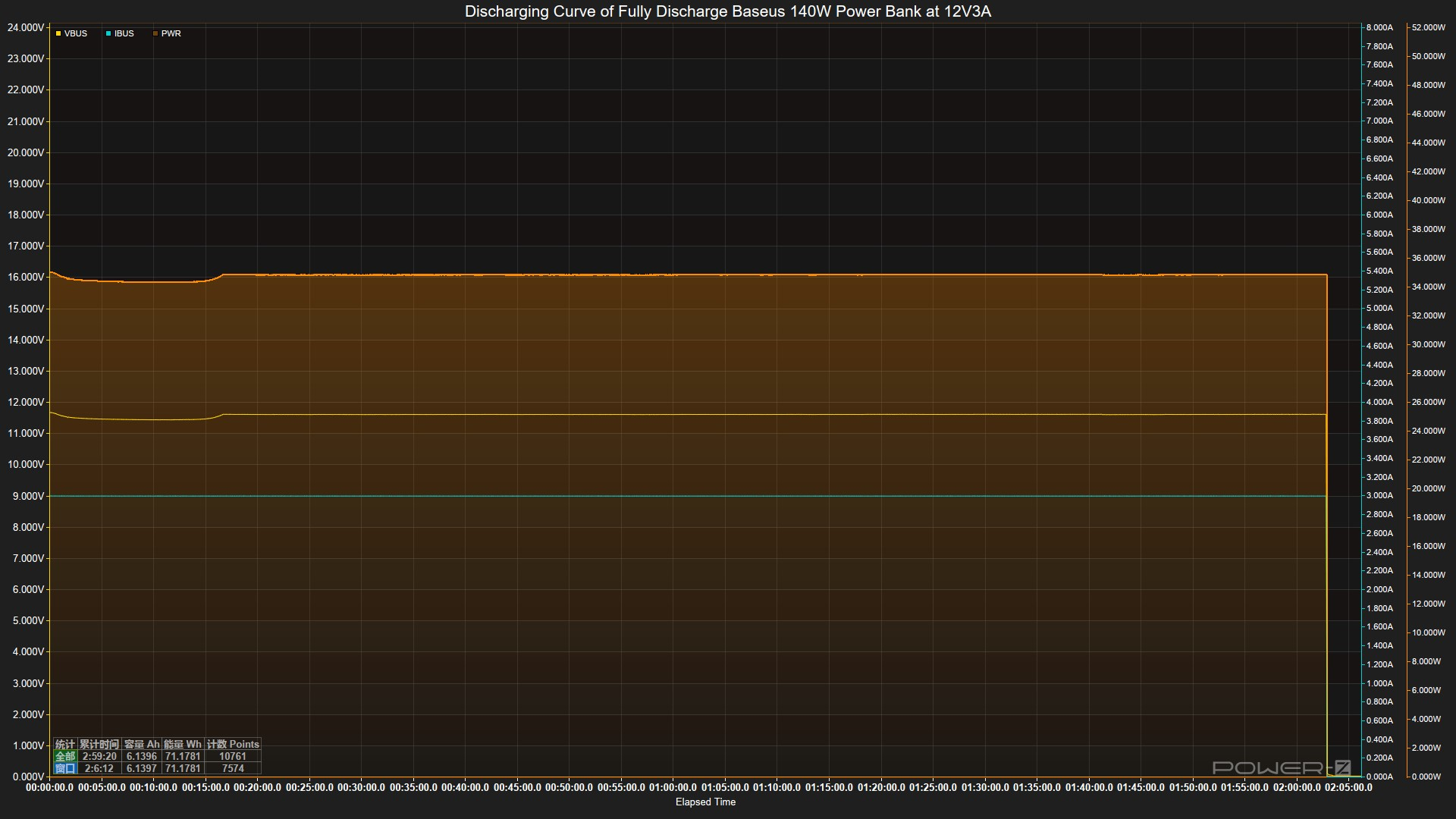
Then, we had the power bank continuously output at 12V3A (36W), which ended after 2 hours and 3 minutes. The actual discharged battery energy was approximately 71.18Wh, resulting in an efficiency of about 82.38%.
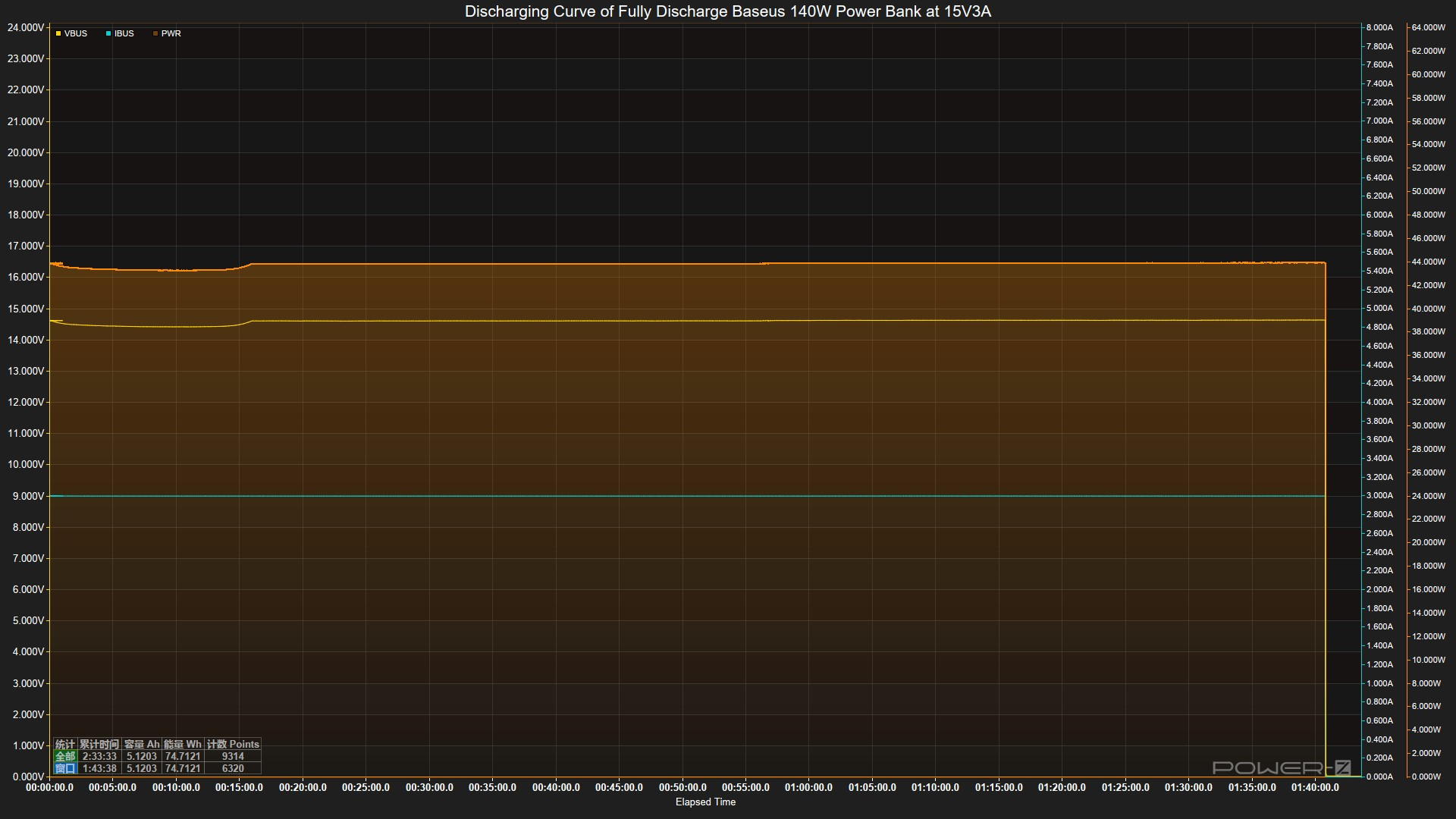
Continuing, we had the power bank continuously output at 15V3A (45W), which ended after 1 hour and 41 minutes. The actual discharged battery energy was approximately 74.71Wh, resulting in an efficiency of about 86.47%.
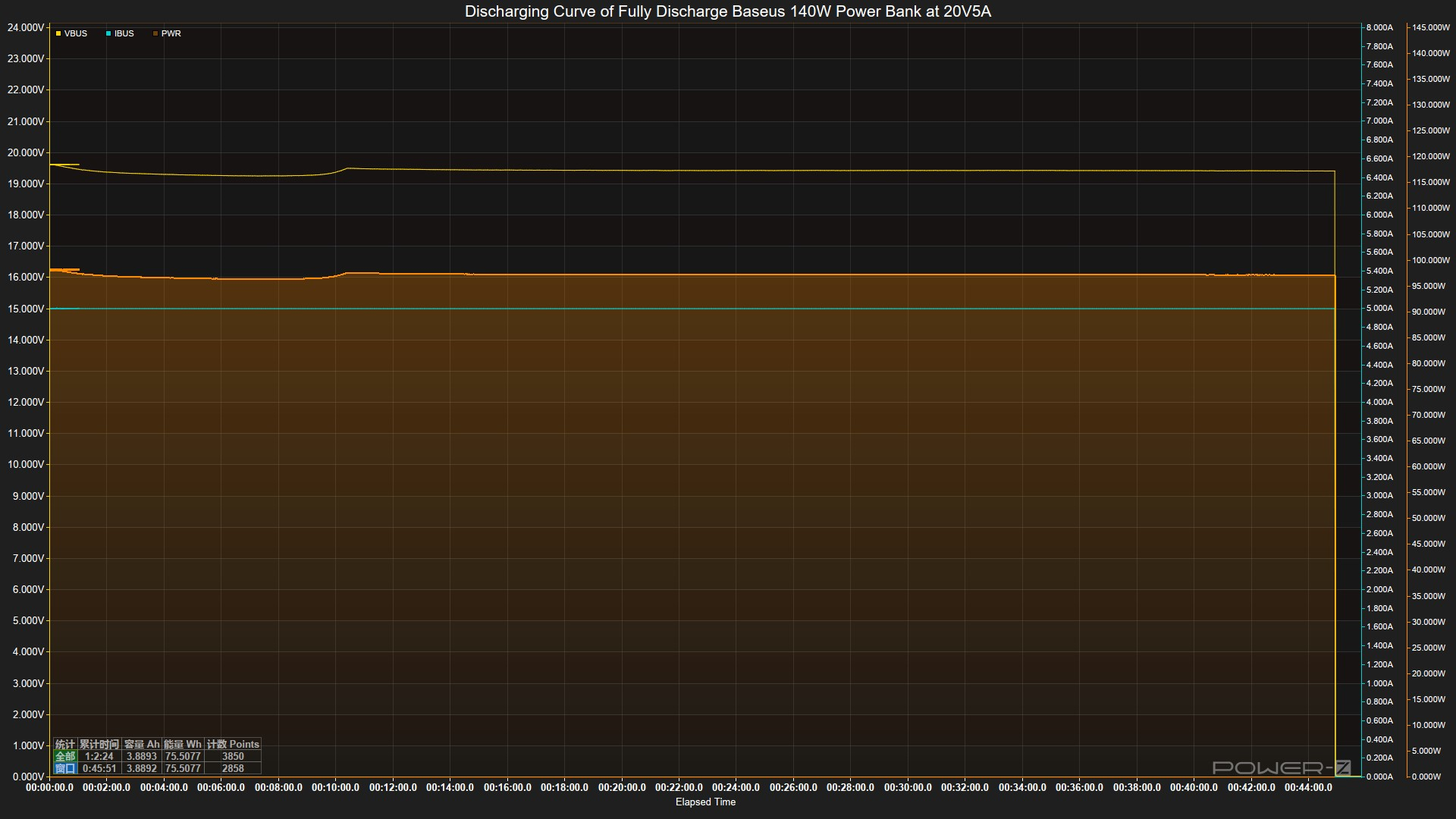
At 20V5A (100W), the experiment ended in 45 minutes, with the actual discharged battery energy being approximately 75.5Wh, resulting in an efficiency of about 86.47%.
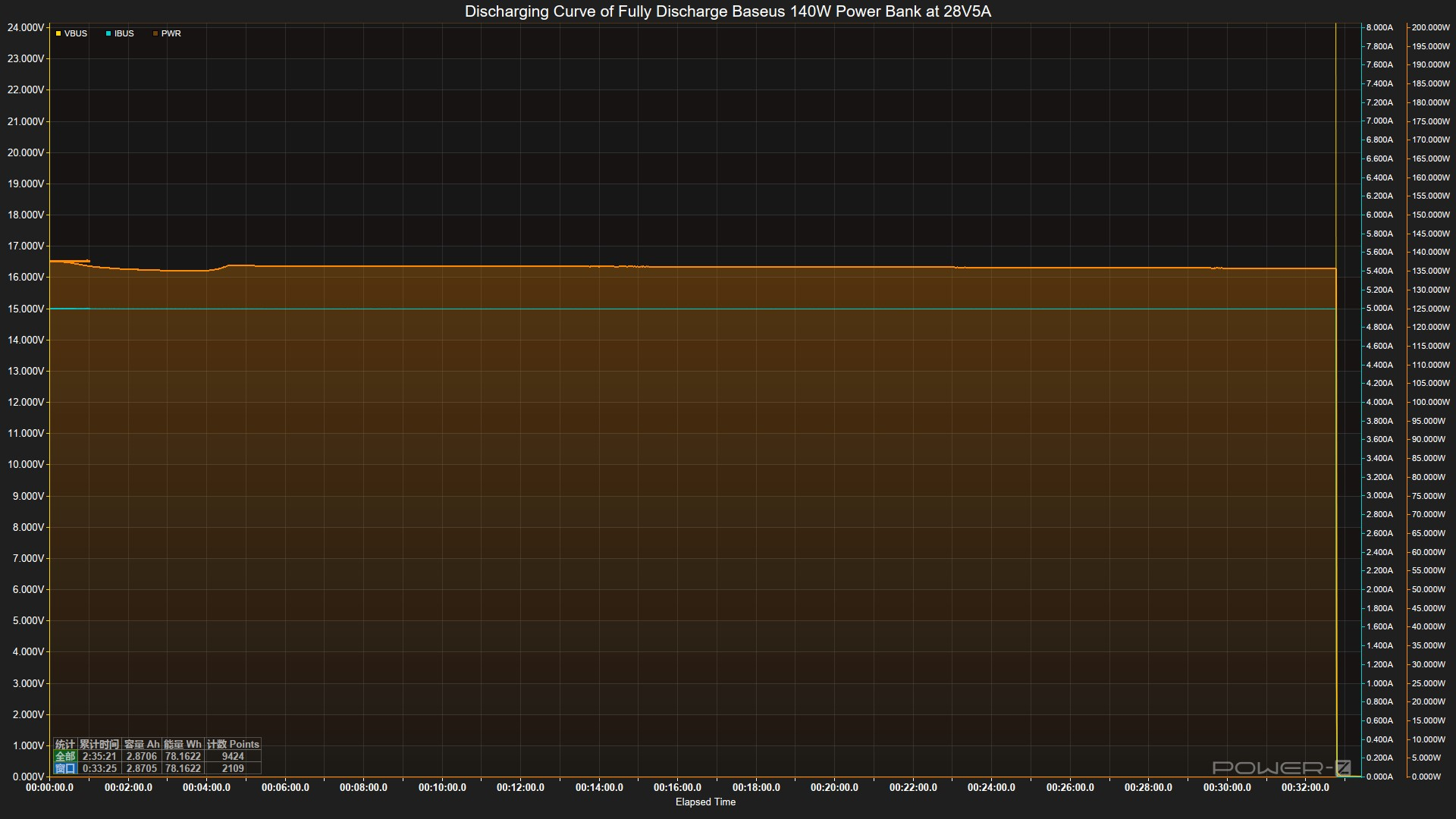
Finally, at 28V5A (140W) output, it depleted in 33 minutes, with the actual discharged battery energy being approximately 78.16Wh, resulting in the highest efficiency of about 90.46%.
Output Temperature Test
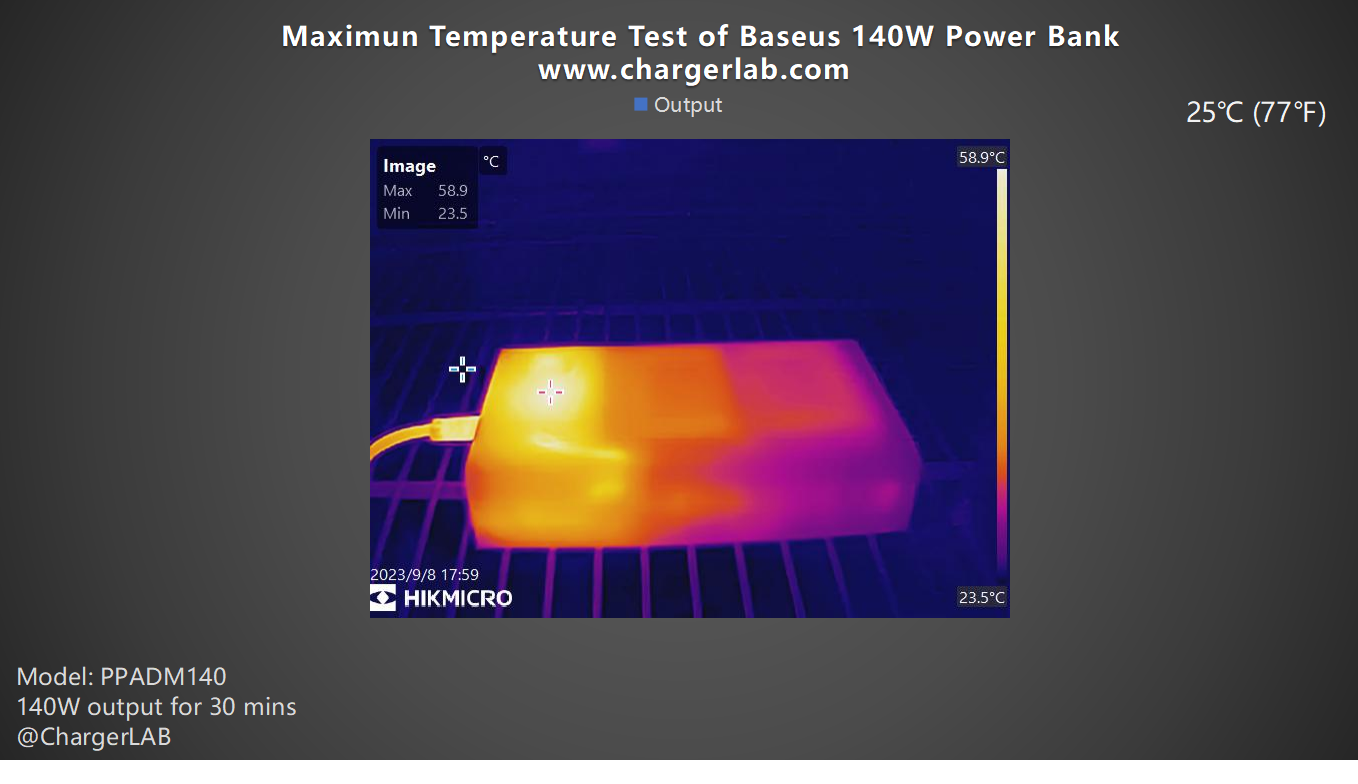
At the theoretical maximum heating level of 28V 5A 140W, running for 30 minutes, the highest temperature on the power bank's top surface is approximately 58.9°C (138.02℉), with the heat primarily concentrated at the output port. For a power bank of this configuration, the thermal control performance is quite good, and it feels warm to the touch.
Summary of ChargerLAB
The exterior of the Baseus 140W Power Bank is made of black PC material with a matte finish, making it resistant to fingerprints. It features two USB-C ports and one USB-A port. USB-C1 supports both input and output, providing users with a wider range of charging options.
In terms of charging performance, the USB-C ports support 100W power input and 140W output, while the USB-A port offers a 22.5W output. In compatibility test, it has been demonstrated to work well on mainstream smartphones, tablets, and computer devices. Additionally, the USB-A port supports the SCP fast charging protocol, providing a favorable charging experience for Huawei smartphone users.
Furthermore, when charged with an Apple 140W charger, it reaches a full charge in just 1 hour and 6 minutes. During the output test phase, it exhibits exceptional efficiency, exceeding 80% at 5V, 9V, 12V, and 20V voltage levels, with the highest efficiency reaching approximately 90.46%. Moreover, its temperature performance is outstanding. Even under maximum load for half an hour, the highest temperature on the exterior reaches only 58.9°C. In everyday use, the temperature will be lower than that recorded during the full load test, making it more durable and safer.
Related Articles:
1. Teardown of CUKTECH No.15 150W & 20000mAh Power Bank
2. Teardown of Anker 140W PD3.1 Power Bank (737 Power Bank)
3. Charging Compatibility Test of Anker 140W PD3.1 Power Bank (737 Power Bank)

